The things we do not know

A couple of items from the science news caught my attention recently. One was a TED talk in California yesterday by Stuart Firestein, chair of the biological sciences department at Columbia University. Firestein said that science has been put on a pedestal and that scientists have been rebranded as “fact producers.” He seems to be right when you listen to popular media. Too often a small amount of the work of a particular scientist is quoted in the media to support a political position or to “prove” a point. The debate over the proposed construction of the Keystone XL pipeline is an excellent example. Those on both sides of the argument find snippets of information from scientific studies, call those bits of information “facts” and use them to support their point of view. A student of logic could easily point out the fallacy of such arguments, but public debate is rarely couched in the rules of logic. In my experience the average high school debater is far more likely to present a logical argument than a legislator. And the television news is even less logical than the debate in the legislature, if such a thing is possible.
At any rate, the thing that was inspirational about Mr. Firestein’s talk was his urging that ignorance should be celebrated. It is, after all, the job of science to analyze the gaps in knowledge – to be brutally frank about what we don’t know. It isn’t a collection of facts that makes a scientist – it is the understanding of what remains unknown. Science isn’t a puzzle that needs to be put together to be complete, he explained. There is no puzzle and most science is never complete.
George Bernard Shaw is famous for his quote, “He who can, does. He who cannot, teaches.” But in fact, Shaw was a man who both could and who taught. And he had a lot more to contribute to the philosophy of science. He also wrote, “Science becomes dangerous only when it imagines that it has reached its goal.” A truly educated person comprehends that we have very little knowledge when compared with the vast amount of things that we do not know. Science ought to be about at least understanding that the majority of the universe is unknown. The Irish playwright also penned, “Science is always wrong. It never solves a problem without creating 10 more.” That could be interpreted as a condemnation of science, but in reality it is a celebration. There is so much more to understand than we can comprehend that a truly educated person realizes that life is a continual discovery of the unknown. What we don’t understand is far more vast than what we are capable of knowng.
To treat science as a producer of facts is to demean a much bigger and grander pursuit. Mr. Firestein said, in his talk, that “we commonly think that we begin with ignorance and we gain knowledge.” He continued, “The more critical step in the process is the reverse of that.”
Answers create questions and the true scientist dives into the questions, not the answers. In order for us to continue to produce new generations of scientists, we need to cultivate a love of the unknown and the unanswered. To get excited about science we must focus on what we don’t know rather than on some perceived accumulation of facts.
It is a tragedy that we are raising a generation of young minds who think that all of the answers are “out there.” They search the Internet on their smart phones and think that all they have to do is to find the answer that satisfies them in the vast universe of data that already exists. Such a pursuit is a fool’s errand. The true challenge is found in embracing mystery. When students focus on accumulating facts, they ignore the areas where ignorance exists and where there are answers yet to be solved.
The joy of life doesn’t lie in the facts. It lies in the pursuit of truth in the midst of ignorance. We can’t discover that joy until we become aware of the ignorance.
This is true in theology as well as in the other sciences. The claim that we know and understand God is simply another way of admitting that our vision of God is far less than the reality. God is much grander and more complex than we are capable of understanding. When we admit that there is much that we don’t know and can’t understand, the joy of the relationship with God expands and theology becomes a task worthy of a lifetime and beyond.
I was also interested in the story that multi-millionaire Denis Tito, the first space tourist, who reportedly paid 14 million British pounds to spend six days on the International Space Station in 2001, is now funding a private expedition to Mars. The team planning the expedition announced yesterday that it is looking for a “tested couple” in their 40’s or 50’s to take part in a 16-month mission to Mars. Explaining that they were worried about the stress of living in a confined space for such a long time, the planners of the mission have focused their search on couples that have been through stress and seen their relationship strengthen and grow.
According to chief technical officer Taber MacCallum, the actual flight could happen within the next five years. The couple would get within 100 miles of Mars, but would not perform a space walk. That means 16 months living aboard a tiny spacecraft, with minimal food, water and clothing. It won’t be an easy mission.
My reaction was “right on!” I think that couples who have been married for a long time have skills at living together that are valuable. I think that the ability to live together in a cramped space is a skill that takes a lot of practice. Susan and I have lived for up to a month and a little more in our pickup camper. It has exactly 2 feet by 6 feet of total floor. If one person is standing up, the other either has to be in bed, in the dinette or in the bathroom. We do quite well in that space.
But, alas, we are too old for the project. Then again, they won’t find any couples in their 40’s who have been happily married for 40 years. Maybe we should apply just on the odd chance that experience sometimes is worth more than youth. At least we can admit that there is a lot we don’t know.
Copyright © 2013 by Ted Huffman. I wrote this. If you want to copy it, please ask for permission. There is a contact me button at the bottom of this page. If you want to share my blog a friend, please direct your friend to my web site.
A pair of comfortable shoes
They won’t be calling me.

They didn’t sell white cowboy boots in Big Timber Montana in those days.
I never did own a pair of white cowboy boots. I do have a white Stetson hat, but that is another story completely.
But I wear cowboy boots in the pulpit. In fact I have a brand new pair waiting for Easter. They are black. I wear black or brown boots when I am preaching. There were many years when I only owned one pair and brown was my preferred color in those days. I suppose it is vanity, but the boots make me an inch taller and when you are as short as I am every inch counts. The pulpits in the churches I have served all dwarf me. They simply assume that the preacher would be taller. I preached on a Pepsi case in Hettinger. I’ve still got that box. The pulpit in the church I currently serve has a 3” riser in it that can be removed if they find a taller preacher. The part of the pulpit that holds books and papers can also be adjusted up from its current setting.
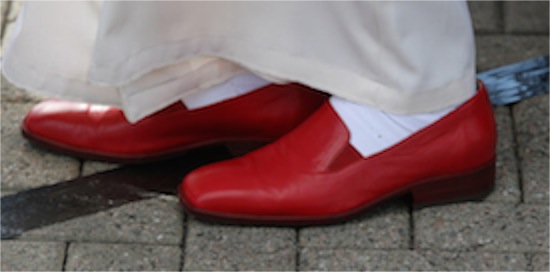
It is a little-known fact that part of the pope retiring is that he will be trading in his red shoes. He will be known as pope emeritus, emeritus pope or in Latin pontifex emeritus. And he will wear a simple white cassock. No more elbow-length cape, called a mozzetta. And no more red shoes. It is said that the pope bought a pair of brown shoes on his trip to Mexico last year, so he’ll be prepared.
During the conclave when the cardinals are praying and discerning who the next pope will be, Benedict XVI will have moved out of the official papal residence in the Vatican and will take up temporary residence in the papal seaside retreat Castle Gandolfo. The castle, south of Rome is also known as the summer residence of popes. It has elaborate gardens and grounds, filled with statues. It is said that Benedict is fond of feeding the fish in a pool with a statue of the Virgin Mary in its center. Deep below the castle is a grotto with a cloister carved out of the stone. There is a large staff that keeps the castle ready for the pope, guards its entrances and maintains the buildings and grounds.
The pope will be in the castle as a temporary residence because the remodeling at his new permanent home is not yet completed. After the conclave when the remodeling is finished, he’ll be moving to the Mater Ecclesiae monastery, inside the Vatican state. The monastery isn’t really an elaborate cloistered residence, but rather a simple former home of nuns who were given the task of praying for the pope. There are no stone-arched hallways or massive common areas that people often think of when imagining a monastery. “It used to be the gardener’s house,” Sister Ancilla Armijo said. “It’s just a small house. What they added was just a library for the sisters and a new chapel.” When it was used by the nuns, six women lived in the house. From the house there are excellent views of the papal apartment, the Sistine Chapel and St. Peter’s Basilica. The current remodeling is focused on the kitchen area, which is in need of upgrading. The residence will also get new air conditioning, which is needed because the small house is very hot with no trees to shade it.

They won’t have trouble finding some other guy who wants to wear the red shoes.
Copyright © 2013 by Ted Huffman. I wrote this. If you want to copy it, please ask for permission. There is a contact me button at the bottom of this page. If you want to share my blog a friend, please direct your friend to my web site.
Learning to say yes
Before I move on, I simply want to state that I believe in the separation of powers that is written into the Constitution of our nation. So it grieves me when the Senate delays and says “no” over and over when it comes to judicial appointments. Not granting the judges necessary for the efficient operation of the judiciary weakens this vital branch of government. At the same time the Senate and House are so deadlocked and so busy saying “no” that they have become almost incapable of passing meaningful legislation. Draconian cuts are hanging over the federal budget. There are just four days left to stop automatic spending cuts from affecting everything from air travel to food inspections. And yesterday the United States House of Representatives had only one item on their agenda. H.R. 667 would “redesignate the Dryden Flight Research Center as the Neil A. Armstrong Flight Research Center.” No, renaming NASA operations is not the most pressing order of business. The leadership of the House of Representatives is pursuing a considered strategy of deliberate idleness. With the Senate engaging in delaying action that results in a weaker judiciary and the House engaging in action that results in a weaker legislative branch, both chambers seem to be set on upsetting the balance of powers.
It is all because it is easier to say “no!” than to say “yes.” You can win an election to the U.S. Senate or House of Representatives by telling people what you oppose. It takes being in favor of something to govern effectively. Working with others for the common good, by the way, a lesson that is actively taught in the preschool in our building every day. I’ve though about requiring mandatory preschool for all legislators, but have no idea how to get such legislation passed in the culture of “no!”
The same thing happens in all sorts of arenas in contemporary American society. It is a fad these days to say that you are “spiritual, but not religious.” When I try to figure out what that phrase means, those who use it are rarely able to articulate what they mean by “spiritual.” They might give a vague description of an emotional reaction to one of the glories of nature. They might describe a moment of meditation that was meaningful. But for the most part they shrug their shoulders and say, “you know what I mean.” I don’t know what they mean. I am genuine in my curiosity. But most people who claim the “spiritual, not religious” label can clearly tell you what they don’t like about institutional religion. They feel that too much money is spent on buildings. They are sure that disagreements over religion have led to violence. They are upset, and rightly so, over the cover-up of clergy sex abuse and pedophilia. They blame the church for wars and religious people for the restriction of human rights. They often describe doctrinal rigidities, the over-application of guilt and other aspects of religion that I do not experience in the congregation that I serve.
I, of course, have a different perspective. While it is true that plenty of evil has taken place because of misguided religion and there is no small amount of abuse of power in religious institutions, it is also true that a great deal of good is done by religious institutions. Our church is involved in the direct feeding of hungry people, in providing energy assistance to cold people living in our region, in working for justice for those who are oppressed and striving to improve the care of the environment for the benefit of all people. We do pay salaries and maintain a building, but that building is used for a wide variety of community activities and functions. I could write thousands of words about the good things that we do. This does not make us a perfect institution. It is simply that the negative criticism isn’t the whole story.
As to spirituality, I am also moved by the beauties of nature and I am disciplined about the practices of silence and prayer and study. I am attentive to the movement of the Holy within my life. In addition, I have learned that taking the Spirit seriously demands a relationship with others. In Christian terms, you can’t be the body of Christ all by yourself. In practical terms, discerning the difference between what God wants and what I want is easier when I am engaging others in the process of discernment. There is nothing wrong with private and personal spirituality, but it is enhanced, strengthened and empowered by practices in community.
I also find that my spiritual life is enhanced by the study of the history and philosophy of religion. “Spiritual but not religious” people sometimes tell me of their discovery of a practice, but they are unaware that the practice is ancient. The only thing “new” about New Age religion is that the practitioners don’t know the history of previous generations. They think they are “discovering” new practices. What they have found are ancient practices. Because they have little information about the history of religion, they can’t see how they fit into a much grander, multi-generational stream of religious practice.
So if you think I’m wrong, or if you think I don’t understand, please do me the favor of thinking about what you do believe. Tell me about the positive aspects of your position. Think about what you might contribute to society and to the history of our people.
I have far too many opportunities to hear what people oppose and what they are against. I’m eager to hear about the things that make you say, “Yes!”
Copyright © 2013 by Ted Huffman. I wrote this. If you want to copy it, please ask for permission. There is a contact me button at the bottom of this page. If you want to share my blog a friend, please direct your friend to my web site.
What holiday is it?

But it just isn’t that simple. You might think that nationalchiliday.com, the official National Chili Day web site, might have the real scoop on the actual day of celebration. According to that site, National Chili Day is the 4th Thursday of February, which would be the 28th this year.
The Butcher’s Blog lists February 23 as National Chili Day.
Answers.com reports February 24 as National Chili Day.
The Goodecompany blog has National Chili Day as September 5, but they are so far out of sync with the rest of the world, that I’m discounting their authority when it comes to the official day for chili.
The solution, I guess, would be to make a really big pot of chili today and have leftovers for the rest of the week. That would have been easier had I remembered to put the beans out to soak overnight, but I didn’t do that. It still isn’t too late for a good bowl for supper thanks to the power of the crock-pot.
Around here, the most common chili features ground beef or buffalo with onions, garlic, tomato sauce and red kidney beans flavored with cumin, oregano, salt, pepper, chili powder and just the right amount of cayenne. It’s pretty easy up up the ante with chunks of stew meat in place of the ground meat. Cooked just right the meat will fall apart and fill the bowl with flavor. We like a healthy dose of shredded cheddar on top.
I’ve also made chili with ground turkey.

But I’m thinking that today might not be a bad day for chili with chunks of diced chicken, which got me to thinking of some really good chicken apple sausage that I had last summer and I wonder if I could find any of that at the store at this time of the year. . . .
Not knowing what day is the official National Chili Day does leave open the possibility of trying more than one recipe, I suppose.
The Ultimate Holiday Site, being sponsored by Hallmark and the Kansas City greeting card’s company’s desire to sell cards every day, usually has more than one holiday for the day and today is no exception. OK, they only listed one holiday for yesterday, National Tortilla Chip Day. I missed that one completely. At any rate they are showing February 25 as National Chocolate Covered Nuts Day as well.

I know the basic story of how Mordechai and his adopted daughter Queen Esther saved the Jews from that evil Haman, vizier to King Ahasuerus. I know that Purim is celebrated with a big meal, gifts of food and drink, charity to the poor, and the public reading of the book of Esther. I hadn’t made a connection between the holiday and chocolate covered nuts before, but I guess if you are running the Oh! Nuts website, every day is a good day to celebrate with chocolate-covered nuts. They do have a point, chocolate seems to be an appropriate food for any celebration.
So I suppose that it isn’t too late to order your chocolate covered rabbit for Easter. That holiday is still four weeks away. And I prefer the chocolate rabbit to those silly marshmallow peeps any day. But then I’m no fan of marshmallows. I used to make S’mores with chocolate and graham crackers and leave out the marshmallows.

I guess I’ll stick with a pot of chili.
Copyright © 2013 by Ted Huffman. I wrote this. If you want to copy it, please ask for permission. There is a contact me button at the bottom of this page. If you want to share my blog a friend, please direct your friend to my web site.
Awesome!

Shortly after the Protestant reformation in Christianity, the word “awesome” began to appear in the English language. It had an etymological predecessor, in Old English, “egeful,” that had a similar meaning. It is really the merging of two words with common meaning: awe + some. To be awesome is to inspire awe. An awesome event or sight draws attention to God’s power and might. The word has deep religious meaning and was used in a religious context for generations. Like many other words, however, its meaning has shifted. In contemporary American slang, the word awesome means excellent or exciting, or remarkable: “That was awesome, dude!” The rise of the use of the more mundane use of the word to describe things that are, frankly, less than awesome, has resulted in some of us using the term “awe-inspiring” more when we are referring to the things that generate a genuine religious feeling.
The glory of the night sky over the prairies is awe-inspiring.
The presence of a caring community providing care for grieving persons is awe-inspiring.
The power of wind and water to carve deep canyons and form incredible vistas is awe-inspiring.
There are many more things that create genuine awe in the beholder.
It may be that we need such inspiration. It may be that the ability to experience awe is an essential part of being human.
Daniel Drupsteen and Jimi Hunt are two men who live in New Zealand who are creative thinkers. They are also two men who have suffered from depression. Depression can be a debilitating disease. Left untreated it can lead to death – sometimes death by suicide. They decided that they wanted to lead lives that made positive movement away from depression. Part of that process was figuring out how to achieve things that mattered to them – do some things that were deeply meaningful – change the ways they lived their lives.
Daniel wrote what he called his “Manifesto for Awesomeness.” It listed some really big goals for his life. It also had a “black list” of fears that he wanted to conquer. There was also a list of things that were fun to him. And finally there was a list he called the “ridiculist” that contained all sorts of silly, and fun and unlikely events such as delivering a baby on a plane, getting a guest spot on The Simpsons, and have a shotgun wedding in Vegas. It also contained a couple of things that are truly awesome from my point of view. Being from “down under” he wanted to see the aurora borealis. I can testify that that one is a truly awesome experience.
Together Daniel and Jimi have formed a nonprofit organization that they call “Live More Awesome.” Live More Awesome is a place to inspire others to better themselves – or more accurately a way for people to motivate themselves to live better than they currently are. Daniel and Jimi believe that if one continually strives for better things – to live more awesome – there is no way that depression can take over their lives again. And they sensed that the way to get into the mode of that continual striving is to surround themselves with a community of other people who help one another. They started in their hometown of Auckland, New Zealand and, through the use of the Internet and social media have spread their community around the world. They are off an running with their mission and so far it seems to be working for them and for hundreds of others who have gotten involved.

Almost a thousand people slid down the three slides in a festival designed to combat depression, raise awareness of the Live More Awesome project and raise funds for the charitable purposes of LMA. From what I can gather from the news reports, the event was a great success. The alcohol-free event sported a lot of laughter and just plain fun. It was, in a word, “Awesome.”
It is, I think, awe-inspiring as well. Depression is a serious illness and its effects can be devastating to individuals and families whose lives are affected by it. Two men who know the realities of the disease who have banded together to work to combat depression are discovering that by helping others they are also helping themselves. By giving their lives a purpose they are keeping depression at bay. I have no illusions that depression is easy to conquer. There are no guarantees that it will never again rear its ugly head in the lives of Daniel and Jimi, but for one awesome late summer weekend they were able to keep from being overwhelmed by depression, accomplish something really big and provide a way for others to participate in the fight against depression. What they have done inspires awe in me. People working together to help other people is direct evidence of the power of God at work in the world. I’m pretty sure that Daniel and Jimi wouldn’t use religious language to describe their work. We, who are Christian, however, see God at work in the midst of places that are not labeled “religious.” We understand God’s presence in all of life, not just in the places where religious language is popular.

The Live More Awesome web site has a page of quotes that provide inspiration:
“The Secret: Keep Going.”
“Dreams don’t work unless you do. Get up. Get active. Get it done. Achieve your goals.”
“There is no passion to be found in settling for a life that is less than the one you are capable of.”
It is awesome! And I intend to pass on some of their quotes to others.
“We are all in the gutter, but some of us are looking at the stars.”
“If your ship doesn’t come in, swim out to it.”
Copyright © 2013 by Ted Huffman. I wrote this. If you want to copy it, please ask for permission. There is a contact me button at the bottom of this page. If you want to share my blog a friend, please direct your friend to my web site.
My job description
This spring I am working with our congregation’s Pastoral Relations and Personnel Committee to develop job descriptions for our ministers. The problem is that job descriptions are lists of tasks to be done. Ministers are not defined by the tasks they accomplish, but rather by the persons that they are. To put it another way, ministry isn’t something one does, but rather who one is. So I have been working to state in as few words as possible the essential functions of the ministry without limiting the tasks that one might do.
I don’t see any reason to put it in my job description, but there are days when I replenish the paper supplies in the bathrooms. Sometimes I need to put the toilet plunger to work. I pick up litter from the church yard. I split firewood. I run to the store to pick up supplies. In a sense, my job is to do whatever is required to enable the members of our congregation to engage in their own ministries. I wouldn’t want those tasks to be written into a job description, because on other days there are other tasks.
Like any other job there are some tasks that I prefer over others. One of my “least favorite” tasks is running the church sound system. We are in the communications business. Unless we are heard and understood, it is hard for our worship to be meaningful for those who participate. But I have no training in the operation of sound systems. I don’t know why the microphones sometimes “crackle.” I don’t understand why the volume levels seem to change in the middle of a worship service. I don’t want the job of being the church’s sound engineer. But we need to communicate clearly and the job needs to be done. So I have tried to learn. I listen carefully to the complaints about the sound system. I have placed orders for new equipment, tried to learn to use it well, and make adjustments to the system as best as I can. It is a silly example, but in my “dream” world I would spend less time on that part of the job. I certainly wouldn’t want the task “operate the sound system” to be in my job description.
Therein lies a problem with me writing a job description. I don’t really believe that the job is about me at all. The job is about the work of the church. My job is to do whatever is required to enable the members of the congregation to grow in faith and extend their ministries to others. If that means learning to run the sound system, so be it.
It is my job to make sure that quality worship occurs on a regular basis. That means that sometimes I lead worship. But when others lead it is just as important. Sometimes the work that a layperson does to lead worship is more important than what I do. I am there to enable the worship to happen, not to do it myself. A similar dynamic is true in the church’s faith formation ministries. I know that one learns at a quick pace when one serves as a teacher. Sometimes it is in the best interests of the church for me to enable others to become teachers. Sometimes I need to do the teaching.
The value in the exercise of writing a job description for a pastor isn’t in the document that we will produce. It will soon be stuck in a file and nearly forgotten. The value is in the process of thinking carefully about what I do. Some of the things I do are more intuitive than rational. Pausing to reflect and think is one way to live more intentionally. There are times when my priorities are all mixed up. There are times when I need to drop everything and respond to the need of the moment. Being reflective and thinking about what is most important can enable me to work smarter and accomplish more.
I’ve made several drafts of a job description that aren’t ready for “prime time,” as they say. My initial attempts were, frankly, too wordy. It shouldn’t take a long time to read a job description. It really isn’t possible to describe everything that needs to be done. What the church needs in the document, rather, is a broad description that covers a lot of territory and leaves a lot up to the best judgment of the person who is doing the job. In many job descriptions, the most important words are “other duties as assigned.” That doesn’t quite work in an institution with 585 bosses. I have to make judgments about the “other duties” as well as about the essential functions. It isn’t possible for me to prioritize my work in the way that makes everyone happy. There will be disagreements and there will be people who have to wait for the things that are important to them.
Still, it is an interesting process. And it is taking me quite a bit of time to get it done. Because there are a lot of days when other tasks are more important. Today is one of those days. We are holding our annual leaders’ retreat this morning. I’ll lead devotions and make sure that the resources are available. I’ll arrange furniture and I’ll make coffee. I won’t have time to work on my job description. I’ll be too busy doing the things that need to be done.
Copyright © 2013 by Ted Huffman. I wrote this. If you want to copy it, please ask for permission. There is a contact me button at the bottom of this page. If you want to share my blog a friend, please direct your friend to my web site.
Being present
Jon Kabat-Zinn, a professor at the University of Massachusetts Medical School and author of scientific papers on the use of mindfulness in medical practice, has written extensively on the use of mindfulness as a technique for stress reduction and as a treatment for depression. His careful analysis of the relationship of mind, boy and emotion has been helpful for me in understanding meditation as a deeper practice than just thinking.
I have been enjoying a lesson in mindfulness this week with the visit of our two-year-old grandson. I am intrigued by watching him, wondering about how he thinks, and observing what he has to teach me about life.

He is not bothered by the fact that our house is too small for riding bikes indoors. He is not bothered by the fact that the weather outside is chilly and there is a dusting of new snow on the ground. He is completely at home in his surroundings. He finds ways to sit on his strider, to push it around our house and to find real joy in playing with it in the place where he is. He doesn’t spend any energy thinking about warmer days or different places or some other time. He is simply present in the moment.

Of course the strider isn’t the only thing in his world. He still plays with other toys, gives and receives cuddles from parents and grandparents, enjoys having books read to him, takes a bath, eats his meals, has naps and gets on with his life. But there is a capacity to focus his attention that seems to be missing from our usually-distracted adult lives. We adults seem to be continually connected to the outside world with our computers and phones and other networked devices. Too often we think that what is most real and most important is the world of work, tasks to be accomplished, a living to be earned, a mark to make on the world. Our grandson doesn’t worry about any of that. And he invites us to come into his world and just be present.

What he teaches is an essential skill to the work I do. When I sit with a person who has just received a life-altering medical diagnosis, I need to simply be present with that person. Distractions of phone or e-mail or thoughts of undone work get in the way of making connections. When I pay a visit in a nursing home, my job is to be truly present with the person I’m visiting. Just being present is a gift that a minister can offer to those we are called to serve. And it may be more important than the words we say.
Being alive to the present moment is not a new idea. People have been trying to hone the skill of presentness for millennia. It may be one of those things at which we were better when we were children. It may be one of those things that we can learn from the children in our lives.
How fortunate I am for the gift of the presentness of a grandson.
Copyright © 2013 by Ted Huffman. I wrote this. If you want to copy it, please ask for permission. There is a contact me button at the bottom of this page. If you want to share my blog a friend, please direct your friend to my web site.
Sweet Potato Fries

We like sweet potatoes at our house. They add color to a meal and have a wonderful flavor. We cook and serve them in a variety of ways. They’re good mashed and baked and they make good French fries, though we usually bake our sweet potato fries instead of deep-frying them because we don’t need the extra calories of fried foods.
The mystery of sweet potatoes for me, however, comes when it is time to buy them. The grocery where we usually shop stocks some form of sweet potato nearly all year round. They sell several different varieties at different times of the year. They come in a variety of skin color from nearly white to brown to red. The color of the flesh inside varies, as well from very light to yellow to orange. Sometimes, however, the store will have no sweet potatoes, and in their place is a bin of yams. Here is where the tricky part comes in. In the United States, most of the yams that are sold are actually sweet potatoes. Confused? Me, too.
Sweet potatoes are members of the morning glory family, Convolvulacea. They are native to Central and South America, but they found their way across the ocean before Europeans found their way to the Americas. Archaeologists have found prehistoric remains of sweet potato in Polynesia from about A.D. 1000 to A.D. 1100, using radiocarbon dating. It is theorized that these came from the western coast of South America, perhaps transported by Polynesian sailors who traveled the oceans long before European ships entered the Pacific.
At any rate, sweet potatoes found their way to Europe with the travels of Captain James Cook, who returned from Polynesia with the food believing that it was unique to Pacific islands.
Yams, on the other hand, come from Africa and Asia and were known in Europe for a long time before anyone there had ever seen a sweet potato. Yams are closely related to lilies. There are over 600 varieties of yams and 95% of these are grown in Africa. Compared to sweet potatoes, yams are starchier and drier. Unless you specifically search for yams, usually found in international markets in the U.S., you are probably eating a sweet potato even though the bin at the grocery store is labeled yams.
I haven’t got a clue as to why Americans call sweet potatoes “yams” on a fairly regular basis.
I’m sure that this is exciting news for those of you who are used to getting up and reading my blog in the morning. You expect to have some pithy bit of theology or perhaps a report of a personal experience, though regular readers of my blog know that the topics are so varied, it is difficult to predict what the day’s story might bring.
But there is more to the story than vegetables. Archaeologists now believe that Polynesian travelers didn’t just visit South America and sail away with sweet potatoes. There is now some evidence that they may have introduced chickens to the continent. Among Central and South American archaeologists, this is a matter of considerable controversy. It is possible that Columbus was the one to introduce chickens to the continent. After all his voyages did a lot of moving food from one part of the world to another. Columbus and his European compatriots are responsible for bringing tomatoes to Europe. These days we can’t imagine Italian cooking without tomatoes. They also brought chili peppers back to the continent and the peppers made their way from Europe to Asia. Which is a good thing, because peppers seem like essential ingredients in much of Chinese cooking.
Chickens in South America, however are a bit of a mystery. Some Archaeologists claim that they have found evidence of chickens in Western Peru that predates the arrival of Columbus. Unlike sweet potatoes in Polynesia, however, the evidence of chickens is much closer to the date of the arrival of Columbus – close enough that other archaeologists question the claims that the chickens got here first.
It begs the question, which came first, the chicken or Columbus?
I know you would like to have this resolved before the end of the blog so that you can get on with your day.
What I find interesting is how much food from one part of the world has travelled to another part of the world. We are told that eating local is good for the planet. The less foods are traveled, the less energy is used. But eating local is a bit of a challenge in any location. Because we humans have been transporting food form one place to another for as long as we have been traveling. And we have transplanted foods from one part of the world to another on a regular basis.
Charles C. Mann, author of the book, “1491: New Revelations of the Americas Before Columbus,” is pretty excited about the contact between Polynesians and people in South America before the voyages of Columbus. “It would be a mind-boggling voyage,” he says. “Suppose you started some place in Easter island. It’s incredible to think that you could go all the way to South America. This is scurvy time. It’s a long journey and incredibly dangerous. You’d have to be completely insane – which people are.”
I’m not qualified to comment on the mental health of Polynesian sailors who plied the waters over a millennium ago. They were probably incredibly brave. They were probably incredibly intelligent. They may have employed technologies of sailing and navigation that we had previously thought did not exist at that time. They were likely among the most advanced people of the world for their time.
One wonders, however, if they had already tasted yams. The starchy plants have their own flavor, but it is a bit of an acquired taste. Pacific Islanders, however, claim to enjoy eating Poi – a thick pasty mush made from the Taro plant in Hawaii. Hawaiian poi is rather bland compared with the sweet pudding served as Tahitian po’e or the creamy desert of bananas and coconut served in Samoa. I’ve never figured out whether Hawaiians really like their poi, or if they just serve it to tourists for the entertainment of watching their reaction to the stuff.
At any rate, if you had been living on a diet of poi, you might well be willing to do something truly crazy for the taste of sweet potato fries. Those ancient mariners might have discovered that it was well worth the long trip.
Copyright © 2013 by Ted Huffman. I wrote this. If you want to copy it, please ask for permission. There is a contact me button at the bottom of this page. If you want to share my blog a friend, please direct your friend to my web site.
Passionate about Firewood

My friends know that I have been known to utter a joke about those of Norwegian ancestry from time to time. It is all in good spirits, but I also know that ethnic jokes all contain an element of untruth. No group of people all fall into the same category and jokes can quickly become slurs and disparaging statements. For the most part I try to avoid ethnic jokes these days, or try to at least tell jokes in which I am the person in the joke. It’s not always easy.
So I need to say up front that this is no joke. Today’s blog is based on information from the New York Times and the Oslo Journal. Mind you I don’t speak or read Norwegian, so some translation by others was involved. The story starts with Lars Mytting from Elverum, Norway. He wrote a book called “Solid Wood: All About Chopping, Drying and Stacking Wood.” I know that it sounds so exciting that you’re ready to quit reading the blog and head to Amazon.com to order your own copy. That might be a good idea if you read Norwegian. No matter, plenty of people do. The book became a best seller. People in Norway are passionate about their firewood.
A best selling book should lead to a television program, right? Of course, right. So last Friday, during prime time, the special program was aired. It originally was shot to be a series, but was finally edited down to a mere four hours of produced discussion of chopping, drying and stacking wood followed by eight more hours showing the wood being burned in a fireplace. That’s right eight hours of the camera trained on a fire with the occasional excitement of someone adding a bit of wood to the fire.
The show was a hit! Nearly a million viewers, or about 20% of the population watched the program, called “National Firewood Night.”
Remember, this wasn’t the old “Yule log” shot that you sometimes see in the middle of the winter in the middle of the night on American television. That is a bit of video of a log burning that is looped so that you watch the same thing over and over again. The Norwegian program featured a live shot of the fire in a fireplace for eight solid hours with an occasional view of a hand adding a piece of split wood to the fire.
That caused real excitement in Norway. The twitter feeds lit up. People started to text complaints to the television station. “We received about 60 text messages from people complaining about the stacking in the program,” said Lars Mytting. “Fifty percent complained that the bark was facing up, and the rest complained that the bark was facing down.” He went on to say, “One thing that really divides Norway is bark.”
Wow! Excitement and controversy in the same show! And that all happened before they got to the eight solid hours of the fire burning. “I couldn’t go to bed because I was so excited,” a viewer e-mailed to a newspaper web site. “When will they add new logs?” At one point they must have opened the flue a little, “Oh! Just then the flames shot a little higher.”
I knew that Norwegians are a patient people. I had forgotten how passionate they can be when the topic roles around to something that is really important to them.
Petter Nissen-Lie, a 44-year-old lawyer from Oslo tells the story about when one of this three axes broke at his vacation home in the mountains. He took the broken axe to the store where he had bought it a decade ago. When he tried to pay for repairs, he reported, the storekeeper declared, “this sort of thing should not happen to our ax,” and insisted on repairing it for free.” Quality is important to these people. And they stand behind their way of doing business.
I’ve hung out with people with Norwegian heritage a lot. A lot of my friends claim Norwegian ancestry. But I’m not Norwegian. So it isn’t fair for me to criticize. What I do understand is that there is something very important about creating warmth. When our neighbors struggle to find enough money to purchase propane to heat their homes on cold Dakota winter nights, we deliver firewood to help them stay warm. A warm home is a place to share conversation and food and to get the rest that is necessary to go on with life. Without the heat – without a warm place, there is no rest, only misery. Our church takes firewood seriously. We deliver a lot of it. And we stack firewood over and over again. We haul it in from our donors’ property, unload and stack it. Then we split and stack it. Then we stack it into trucks and trailers. Then we unload and stack it again.
In all of that, I don’t remember once having a serious discussion with other members of our group about the proper way to stack firewood. I guess if you stack 50 cords of wood a year, you quit caring about whether or not the stack is pretty. If it stands up in the winds we get around here, the stack is good enough for us. And if it falls over, as sometimes is the case, we pick up the wood and stack it again.
I’m thinking that the 12-hour special on firewood probably won’t catch on here in the United States, however. Something tells me that there are plenty of US viewers who are short on patience for watching the fire. Something tells me that there are plenty of US viewers who are more passionate about car chases and solving imaginary crimes and singing competitions and so-called reality shows about things that don’t seem at all real than they are about how to stack firewood.
But maybe there is just a little bit of Norwegian in me. I think I’d like to watch the program. After all I know the proper way to stack firewood. The bark goes down, always down. Bark is designed to hold moisture in the tree. You need to stack it down for the firewood to dry properly. If you disagree, I’d be glad to debate you. It might even make a good program for Norwegian television. Then, of course, I don’t speak Norwegian.
Copyright © 2013 by Ted Huffman. I wrote this. If you want to copy it, please ask for permission. There is a contact me button at the bottom of this page. If you want to share my blog a friend, please direct your friend to my web site.
Sharing the legacy
And so we became a John Deere family. I used to joke that I was 25 years old before I owned a jacket without a logo on it. The choice of colors for outerwear in our family were green, green, or green, whichever you preferred. I had coveralls with my name embroidered above the left pocket Family gatherings sported paper plates, napkins and cups with the John Deere logo. We boys began to collect John Deere toys.
It has been 35 years since the John Deere dealership was sold. We’ve finally worked our way through the supply of paper cups, plates and napkins. Some of our old toys have been sold or donated. We’ve got one parka and a couple of windbreakers with the John Deere logo left, but not much else remains.
But these days John Deere gear is very popular. The stores are filled with all sorts of green and yellow things. Licensing John Deere is big business. My dad would have been amazed and pleased at the proliferation of all of the items available with the John Deere logo.
I suppose it was natural for me to raise our children with a bit of John Deere brand loyalty. Although neither are in professions related to agriculture, both had a few John Deere toys as children and they heard lots of John Deere stories growing up. There is a bit of the family story that lives on in a few t-shirts and toys as well as in the stories that we tell.

Yesterday, I watched a scene unfolding in my living room that would have put a smile on my father’s face. Our daughter had involved her sister-in-law and her mother in putting together a fleece blanket for our grandson. The material was printed with John Deere tractors and combines. When the blanket was finished, they spread it on the living room floor and Susan found a John Deere pillow that we had. A couple of John Deere toy tractors were placed in the middle and our grandson lay down for a photo opportunity. Everyone took a lot of pictures while I sat in a chair and simply enjoyed the moment. It was such a delight that it seemed as if I were sharing it with my father. I knew how much he would have loved it all.
Perhaps it is just a bit of old-age-induced sentimentality, but I do feel, at times, as if the generations are closer than outward appearances might suggest. Although my father died before our son was born, I feel as if we have been able to share some of the experiences of his life together. I know that some of my ways of being a father are very similar to those I experienced from my father. I know that some of my sayings and mannerisms were learned from him. I know that my sense of adventure was instilled by him. I recognize all sorts of quirks of humor and approaches to life that bear his mark. I can even recognize his traits in our son.
Perhaps there is no joy in life that is greater than watching your children as parents. I have such admiration for the way our son and daughter-in-law are raising their son. Sometimes I just sit back and think, “Wow! They really are good parents.” I’m sure that there is more than a small amount of ego involved. But it seems to me that it is more. There is a heritage of love and placing family at the center of life. There is a heritage of valuing the people who come into our lives. And there is a deep sense of joy in each other.
There is an old Barbara Streisand song that says, “People who need people are the luckiest people in the world.” It is a cliché, but it is true. There is something that is inherently good about being dependent upon other people. We were not created to live alone. We were made for connections and attachments to other people. But there is more to it than sentimentality and a catchy song phrase.
As I watched my grandson yesterday I once again realized the basic truth that lies at the core of our faith: love never dies. We are mortal. We have this gift of life for just a brief moment of time. The vastness of history is far bigger than our time. We come and we go. But in the moment of our lives, we are allowed to participate in many things that are bigger than us. The love I feel for our grandson is not just a possession of my time and my generation. It is a legacy that has been inherited from parents and grandparents and generations of people who loved and treasured their children. And it is a legacy that has already been passed on to a new generation.
The John Deere logo is fun – and it has become a symbol for our family of something much bigger. We’ll keep passing it on from generation to generation.
Copyright © 2013 by Ted Huffman. I wrote this. If you want to copy it, please ask for permission. There is a contact me button at the bottom of this page. If you want to share my blog a friend, please direct your friend to my web site.
She's not still here

Too many times we read stories of famous people who suffer tragic deaths. One thing about being famous is that your life is displayed in public – sometimes with too much information about your health. When there is a chronic illness like cancer there is a public outpouring of support for the person who suffers the disease. One of the common public responses to a tragic death from cancer is an increase in donations to groups that sponsor research into treatment for the disease. This is a positive expression of public grief and there is much good that can come from such generosity.
But the public response to the victims of mental illnesses is different. There can be harsh judgment, inaccurate statements about weakness and lack of self-discipline, and, all too often, a lack of support for research that would provide increased understanding and more effective treatment for the disease.
There is a lot of negative stigma attached to mental illness. When the disease is fatal, there is a lot of negative stigma attached to death by suicide.
Grief over death by suicide is unique. The way in which the community responds is different than the response to other forms of grief. Being caught up in grief of the death of a loved one makes anyone more vulnerable to depression and thoughts of suicide. The grief following death by suicide increases the risk of the grieving person dying by suicide by more than double.
I work with a support network for people who are dealing with the unique grief that comes after the death of a loved one by suicide. We call ourselves “Survivors of Suicide.” The problem is that not everyone survives. I know the statistics. I understand a few of the dynamics. I cringe when I read stories like those coming out of the death of singer Mindy McCready. The layers of pain and tragedy are so complex that no one will ever fully understand them. The legacy of loss and grief and tragedy that her two sons inherit is beyond comprehension.
I don’t pretend to know what happened. But the lives of public figures are often public and there are lots of things about this tragedy that have been known.
As a teenager, Mindy McCready showed incredible talent as a singer and songwriter. By her early twenties she had become a phenomenon. Her debut album, “Ten Thousand Angels” sold over two million copies. It appears, however, the one of the sources of her creative energy was a deep well of pain. Later grim stories of a very tragic childhood began to come to light. Stories of her being the victim of childhood sexual abuse have been reported. Whatever the background story, success in the music field did not bring her balance and happiness. Instead, success was coupled with broken relationships, drug abuse, drunk driving charges, mental illness, hospitalizations, and custody battles over her two sons.
Then, just a month ago, news came out that her boyfriend and the father of your youngest son, record producer David Wilson was found dead at his home. The cause of his death was ruled to be suicide. The investigation of his death focused attention on McCready who denied any involvement in his death. Her two sons were removed from her care during this time.
Her grief must have been overwhelming.
Those who knew her best struggled to find ways to help her.
But the story ended in tragedy. The Cleburne County Sheriff’s Office in Heber Springs, Arkansas released a statement that they had “arrived on the scene at 3:58 pm yesterday and discovered the body of 37-year-old Melinda Gayle McCready on the front porch of the residence at 1132 Fox Chase. Ms. McCready was pronounced dead at the scene from what appears to be a single self-inflicted gunshot wound.”
Two boys, one six years old, the other ten months old, have lost their mother. According to the statistics they have tragically entered the category of persons at risk to themselves die by suicide. There is enough tragedy for a thousand country songs.

“There was darkness, all around me. There were times I was sure I was drowning. There were people, who tried to reach me. But no matter how they loved me, I kept sinking. I got tired on my own hand, I reached inside and I saved myself.”
No one can save herself.
It can’t be done alone.
The bridge to the song is haunting now that the story has unfolded to its tragic conclusion: “This time I can survive. I ain’t dying on nobody else’s cross. I ain’t sufferin’ no more unforgivin’ loss. Oh, no.”
According to the news reports there has been an overwhelming outpouring of grief throughout the American country music community since news of her death was released. Carrie Underwood tweeted, “I grew up listening to Mindy McCready . . . so sad for her family tonight. Many prayers are going out to them . . .”
I have no doubt that the grief is real. I have no doubt that the prayers for her family are sincere.
But the tragedy deserves more. It demands that we increase research into the treatment of mental illness and the prevention of suicide. In addition to the outpouring of grief from the country music community, I pray that there will be an outpouring of generosity to organizations that help to prevent such tragic deaths. The American Foundation for Suicide Prevention is the leading national not-for-profit organization exclusively dedicated to understanding and preventing suicide through research, education and advocacy, and to reaching out to people with mental disorders and those impacted by suicide.
The most fitting memorial to Mindy McCready would be the education of the public about mood disorders and suicide prevention. Only through education can policies and laws be changed. Only through education can programs and resources be developed for people at risk.
It was as if we could see this tragedy coming, but we were unable to prevent it. But there is always another potential tragedy just around the corner. There is much that remains to be done.
Copyright © 2013 by Ted Huffman. I wrote this. If you want to copy it, please ask for permission. There is a contact me button at the bottom of this page. If you want to share my blog a friend, please direct your friend to my web site.
Showers of blessing
When we moved into this house we were looking for flexibility. We knew that our then-teenage children would continue to grow and that their needs would change as they made the transition from youth to adulthood. We knew that our parents were aging and that it would be good if we had space for them to stay with us for extended periods of time should the need arise. But we didn’t know exactly how things would unfold.
The house has served us well. I’ve always had a place to use as a study with books and a desk, but it has changed rooms several times over the years. Our daughter started up with a room upstairs and moved to the apartment in our basement. My mother moved into a small bedroom on the main floor of the house for a few years.

And then, gradually in reality, but seeming somewhat more suddenly, we discovered that we were just two people living in a house with a lot of space. Upstairs bedrooms would go for some time with little activities. The study moved to the basement apartment. We spread out a bit. There was a time when the house became a place with a lot of things from other phases of our lives stored. There was a season of sorting and sifting after the deaths of our parents when we had to make decisions about what to keep and what to pass along.
The house has served us well. But it was designed to be filled with people and there have been days when only two of us were around.
So it is a delight to wake this morning before the others arise, a thing I used to do every day. Upstairs our son and daughter in law and our grandson are occupying the bedrooms. Downstairs our daughter is sleeping as she adjusts to a new time zone. Last night at dinner the table was full with the whole family sitting down. As has been our custom, we paused before eating our dinner and held hands around the table. There were enough hands to go all the way around. It was wonderful.
It was for times such as this that our home was made. We are not the original owners of this house. The first owners made this home to house a multiple-generation family, with a grandparent in the basement apartment, the parents on the middle level and children upstairs. We have used it as a multiple-generation home, but have spread out the generations in time. The house itself seems happy to be full of people again.
We are made to live in family. Genesis 2:18 says, “It is not good for the man to live alone.” For millennia, our people have known that we are made to form families and communities and to live with one another. But the stories of our people also teach us that there is much in the development of family that is beyond our control. We have shared memories of tragic deaths and family reconfigurations. We tell the tales of brothers who get into fights, of families that move from one location to another. We know about adoptions and second marriages and a wide variety of families from reading our bible. There is no single model of family that is lifted up as the only form in the Bible. Our people have always been called to practice hospitality in the midst of changing circumstances.
We know that our children are grown and forging their own lives in their own communities. We have been to visit their homes and enjoy meeting their friends. But we are grateful that they have given us the gift of coming to visit in our home. We are delighted that we live in a time of relatively convenient travel. We occasionally complain about the inconveniences of modern travel, but it is the simple truth that our west coast family got up yesterday in Portland, Oregon and had lunch with us here in Rapid City. The speed with which they traveled would have amazed our grandparents. It is simply accepted as a part of our world these days.
The story of our people is marked by times of coming together and leaving. Abram and Sarai leaving their families in the land of their ancestors and heading out to find where God would lead them, Jacob wrestling with an angel on the eve of reuniting with his estranged brother, Moses leading the people with the vision of a promised land that he would glimpse but never enter – the stores of our people saying good-bye, moving on, and entering new places fill the pages of our scriptures and help us to understand the comings and goings of our own lives.
In the midst of all of these comings and goings there are moments of joy. It is good to be together. The old gospel hymn was in my head as I woke for this day:
There shall be showers of blessing: This is the promise of love; There shall be seasons refreshing, Sent from the Savior above.
Showers of blessing, Showers of blessing we need: Mercy drops round us are falling, But for the showers we plead.
There shall be showers of blessing, Precious reviving again; Over the hills and the valleys, Sound of abundance of rain.
Showers of blessing, Showers of blessing we need: Mercy drops round us are falling, But for the showers we plead.
There shall be showers of blessing; Send them upon us, O Lord; Grant to us now a refreshing, Come, and now honor Thy Word.
Showers of blessing, Showers of blessing we need: Mercy drops round us are falling, But for the showers we plead.
There shall be showers of blessing: Oh, that today they might fall, Now as to God we’re confessing, Now as on Jesus we call!
Showers of blessing, Showers of blessing we need: Mercy drops round us are falling, But for the showers we plead.
There shall be showers of blessing, If we but trust and obey; There shall be seasons refreshing, If we let God have His way.
Showers of blessing, Showers of blessing we need: Mercy drops round us are falling, But for the showers we plead.
The forecast for today in our part of the world is for showers of blessing!
Copyright © 2013 by Ted Huffman. I wrote this. If you want to copy it, please ask for permission. There is a contact me button at the bottom of this page. If you want to share my blog a friend, please direct your friend to my web site.
Time will tell

I stood there for an awkward moment during which he said nothing and then asked if I could just go down into the basement where the hang repaired clocks on the wall and identify the clock. “We can match the tag on the clock to my ticket,” I offered. “But you picked up the clock,” he began. “That was in 2010. Then we brought it back this year. We get it cleaned every few years.” “Is it electric?” he asked. “No,” I replied. “Oh!” he said, as if that explained everything. I decided not to make a comment about how the computer might be wrong.
We went down stairs, where the clock was easily located. I lifted it off of the wall. “I’m not sure you are supposed to do that,” he said. “It is the only way to get it home,” I responded. “Oh!” he said, and watched as I removed the pendulum and carried the clock upstairs and laid it on the counter. After quite a bit of consternation and clicking keys on the cash register, he came up with the price, which was the same as I had remembered from last time the clock was cleaned. I offered my bankcard to pay. This he understood. He quickly produced a receipt for me to sign and handed back the card.
“Should I tell you how to hang up the clock and take care of it?” he offered. “I don’t think it will be a problem,” I said. “It has been hanging on the same wall since we bought the house.” “Have you ever considered having a more major overhaul?” he asked. “We just do the repairs recommended by your clock man,” I said. “But you have to keep bringing it back for cleaning.” He said. “Yes, it’s been that way since it was new.” “Oh” he said. I decided not to bother telling him that the clock was brought home on horseback to a homestead in what would become Minnesota by Susan’s great grandfather. It was used at the time. It hung in their home and then in the home of Susan’s grandparents until it finally came to our home.
It occurred to me that the clerk at the clock shop had no understanding of why we might want to keep a clock that is more than a century old running in our living room. I suspect that he doesn’t have much need for clocks. I noticed he wasn’t wearing a wristwatch even though he worked in a store that sells very nice watches. Like most people his age, I’m sure that he uses his cell phone as his primary timekeeping device.
The cell phone is more accurate than our mechanical wall clock. We’ve had it home for about a week, now and it is running about 5 minutes slow. I’ll tweak it, but in general when I get it within 5 minutes a week, that is close enough for me. Since it has to be wound every week anyway, I don’t mind setting it when I wind it. The chimes let me know the time when I wake in the night. It strikes the hour and half hour.
We also have an even older clock that has to be wound every day. It is a mantle clock and it sits on the shelf in my library. I let it run down when we have guests in the house because it has rather loud and a bit harsh chimes. The mechanism strikes a loop of wire. There were elaborate music boxes in that day, but this clock was a working clock for common people. It needs to be cleaned, too, but it usually makes it more than 5 years between cleanings.
I don’t know how many more generations the clocks will be in the homes of our family. So far, neither of our children has expressed any interest in such old devices. I guess they are a bit of a pain. You have to have them cleaned, and, in some places, it is hard to find a clock repairman who knows how to work on these clocks. It hasn’t been a problem in Rapid City. We like the man who does first rate work on our clocks. When the parts break, he has to make new ones, but he is good at that, and keeps our clocks running nicely. I don’t know for sure, but it seems that they could easily keep going for another century.
I’m thinking that the clock shop clerk probably doesn’t understand the “old” people who come in with their “old” clocks. I really don’t need to impress him or anyone else. They have plenty of new clocks in the shop that cost a lot more than our clock is worth. But their clocks don’t have stories yet and I prefer a clock with a story.
I’m betting that when I left the store, the young man sat down at the computer and entered into it the fact that I picked up the clock. It should be interesting next time I take it in to be repaired. I wonder if that clerk will think we took it in in 2007 and picked it up in 2013.
Time will tell. In the meantime, we tell time by counting the chimes of our clock.
Copyright © 2013 by Ted Huffman. I wrote this. If you want to copy it, please ask for permission. There is a contact me button at the bottom of this page. If you want to share my blog a friend, please direct your friend to my web site.
Counting the hours
I’ve taken all kinds of classes in counseling and I’ve been through some counseling myself and I know about the healthiness of expressing emotions. I know that it is not wise to stuff one’s emotions beneath the surface and hide them. They tend to explode in inappropriate and unexpected ways when one does. Still, I guess you might describe me as guarded with my emotions. I don’t like to wear my feelings on my sleeve for the entire world to see.
I have learned that one has to make exceptions. These days most of the funerals at which I officiate are for my friends. I’ve been pastor of this congregation for 17 years. I know the people pretty well. Sometimes the tears come when I am officiating at a funeral. I know that it does not one any good if I blubber, but I have struggled to keep it together a time or two. I’ve even let my anger show a couple of times. When there is something about which I am passionate, it doesn’t hurt for the church board or others in the church to know that I care.
There are simply some times when my emotions come to the surface.
So I will tell you a story:
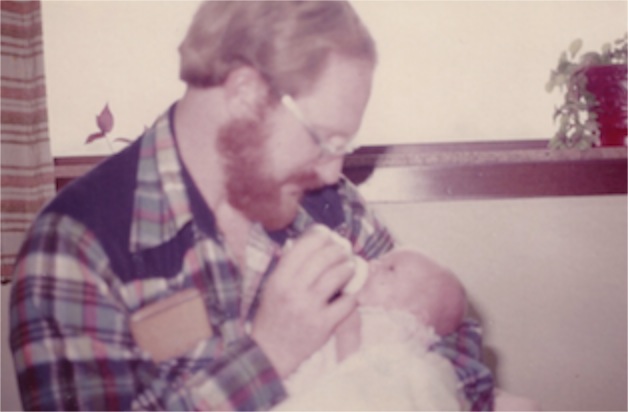
I was so excited to meet that little person that I couldn’t settle down. I like to be in control, but it was definitely a not-in-control moment. I had to force my hands to stop shaking so I could hold her for the first time. It is a moment that I will never forget. And it doesn’t matter how many times I tell the story, it still moves me deeply. She was, in a word, perfect. I was, in a couple of words, in love. That was nearly 30 years ago and I remember it like it was today.
But I am older and I am supposed to be wiser these days. Still, I think I am as excited as I was that day. Today I am waiting to see her once again. She is grown and married and living in another state. But this evening she arrives on the airline for a long weekend visit. Loving children do that for their parents all the time. But I am nearly beside myself with excitement. Just like that day long ago when I woke at 4:30 a.m. and knew I had to wait until our appointment and couldn’t make time speed up, I’m excited far too early in the day. I need to do some other things before she arrives – like go to work, do my job, plan and prepare a bit of supper for my family, and wash the cars. I left myself some tasks on purpose. It is not good for me to have nothing to do when I am excited.
The anticipation is as fun as waiting for Christmas when I was 6 years old.
And the anticipation is double or triple or more because her brother and his wife and son will arrive tomorrow on the airlines. This grandpa business is a really, REALLY, fun thing to do and be.
Our lives are journeys with plenty of ups and downs. It isn’t possible to predict all of the turns and twists in the road, and it probably is a good thing that we don’t know what is coming. But having a few years behind you teaches you that there are some things that you can count upon. One of those things in my life is that the truly great memories keep coming back again and again. Events in my contemporary life trigger connections with my past.
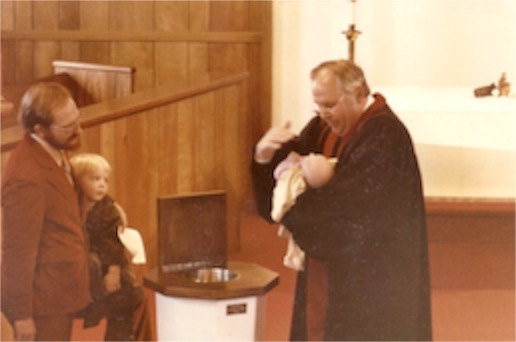
So if I’m a little silly today, it is just because I am excited. And there is something that I know from experience. When she comes down the hallway in the airport and I first see her and receive that big hug – it will be well worth the wait.
Copyright © 2013 by Ted Huffman. I wrote this. If you want to copy it, please ask for permission. There is a contact me button at the bottom of this page. If you want to share my blog a friend, please direct your friend to my web site.
Valentine's Day

If you go back farther in history, Februa was observed as a ritual of spring cleaning. The month February got its name from the festival. (No there was no Emperor Caesar Februarius.) At any rate there have been festivals at this time of the year for a long time. I mention Lupercalia because it is possible that the modern recognition of Valentine’s Day may have roots in the ancient observance. It is likely that early Christian leaders weren’t too enamored with sacrifices to the Vestal Virgins, men running around in goatskins striking women who want to conceive, and a general party in honor of Lupa, the she-wolf who suckled the infant orphans, Romulus and Remus, who went on to found the city of Rome. Romany mythology is often confusing and I’m not sure how worship of Lepercus, the god of shepherds, got caught up with honoring a wolf or sacrificing dogs. At any rate, I can imagine that early Christina leaders might be interested in focusing attention away from the pagan holiday.
I’m not meaning to draw question to the stories of St. Valentine. I learned them as well. The tradition is that under the rule of Claudius the Cruel, Rom was involved in many unpopular and bloody campaigns. The emperor was having trouble getting soldiers to go on all of those campaigns. Claudius believed that Roman men were unwilling to join the army because they had gotten attached to wives and families. So Claudius banned all engagements and marriages in Rome. Valentine, saint that he was to become, ignored the ban and continued to perform marriages. This did not endear him to Claudius, who ordered him to be beaten to death with clubs and have his head cut off. The sentence is said to have been carried out on February 14, in 270.
To make the matter even more romantic, the story is also told that Valentine fell in love with the daughter of his jailer prior to his execution and his last action, on the day of his death, was to write her a note that he signed, “Love, from your Valentine.” Thus started the tradition observed to this day.
Or maybe it didn’t happen quite that way. According to the Catholic Encyclopedia, “At leas three different Saint Valentines, all of them martyrs, are mentioned in the early martyrologies under the date of 14 February.” One was the priest in Rome, a second a bishop of Interamna (now Terni, Italy) and the third St. Valentine was a martyr in the Roman province of Africa.
Whether or not there was conscious effort by church officials to supplant the ancient pagan festivals of the middle of February, over time the holiday evolved into the modern day of celebrating love. For centuries it was a day of exchanging love messages, poems and simple gifts such as flowers. In the scheme of marketing holidays, it is the big event after Christmas. Our grocery store has had an aisle filled with pink heart-shaped boxes of chocolates and teddy bears and other gifts for more than a month. Like many other things we do in our contemporary society, we may be getting a bit carried away with our celebrations. We do tend to overdo things. It is, however, good business for local chocolatiers and flower shops.
I read a news story about Russian Lesya Toumaniantz who let her tattoo artist boyfriend tattoo his name on her face in gothic script within 24 hours of meeting him for the first time. The couple met online, got together face to face for the first time sometime in January, started planning their marriage and she got the tattoo. According to her Facebook page, she wants “100%” of the body covered in tattoo☺”
Hmm. I don’t think I’m going to get or give any tattoos for Valentine’s Day this year.

I wish I were a poet. A love poem might be just the right thing to recognize this holiday. But I haven’t found the right words. So I’ll quote a poem by Rainer Maria Rilke instead:
How shall I hold my soul
to not intrude upon yours? How shall I
lift it beyond you to other things?
I would gladly lodge it
with lost objects in the dark,
in some far still place
that does not tremble when you tremble.
But all that touches us, you and me,
plays us together, like the bow of a violin
that from two strings draws forth one voice.
On what instrument are we strung?
What musician is playing us?
Oh sweet song.
May you recognize love in this day and all of the days of your life. Happy Valentine’s Day!
Copyright © 2013 by Ted Huffman. I wrote this. If you want to copy it, please ask for permission. There is a contact me button at the bottom of this page. If you want to share my blog a friend, please direct your friend to my web site.
Ash Wednesday, 2013

We begin the journey. The length of the season of Lent is 40 days, but since the Sundays are not counted, it is really 46 days until Easter. Actually when one has been around as many years as I, 46 days doesn’t seem very long. The name of the season that we use refers to the lengthening of days that occurs in the Northern hemisphere in the spring. In German (lenz) and Dutch (lente) the name of the season in the Christian calendar is the same as the name of the season in the secular calendar. Lent simply means “spring.”
It is different for us, even though we do witness many of the miracles of spring rebirth during the season. The old names for the season, quadragesmia (Latin) might be more appropriate. It refers to the 40 days of the season, and is preserved in the modern language, Spanish (Cuaresma), though in many Spanish speaking countries the season is referred to as “beloved days.” I’m not sure that I am quite ready to call the season “beloved,” thought I do understand the term. “Difficult,” comes to mind. The season is an ideological struggle.
We humans were created to love life. In the current vernacular, we are “hard wired” to find our joy in living. We are happier, healthier and live longer when we embrace life. Thinking about our mortality and death is not in our nature. But if we pretend that we will never die, we become unmoored from reality.
It isn’t that difficult. The simple truth is that we will all one day die from this life. And along the road to our own deaths, we will experience the deaths of others. We experience grief, and as the years go by, we collect various experiences until grief becomes a constant companion in our life’s journey. This does not change the truth that we love life. It does not mean that we spend all of our days with morbid thoughts. But when we are honest, we cannot escape the reality of death and loss and grief as normal parts of our human experience.
We have this formal season within the church to remind us of this reality. More importantly, we have this season to help us practice and prepare for the coming reality. Because we will all know grief, because we cannot escape our mortality, it makes sense to prepare in the ways that we are able.
There are three practices at the core of our tradition for this season: prayer, fasting and giving. They are all practices of the basic principles of Biblical justice. Prayer is offering justice to God. Spending time with the creator, listening for God’s direction and possibility for our lives is simply rendering to God what belongs to God all along. All of our time comes from God. Allocating time for prayer is a simple matter of justice with God.
Fasting is the practice of being just with ourselves. It is a discipline that I am still learning. Over many years I developed habits that were not good for my health. I added pounds that I did not need. I ate things that were not good for me. I ignored the cost and consequences by not giving enough time to think about my habits. During Lent, we are invited to think carefully about our bodies and how we sustain them. Despite common understandings that fasting is about denying ourselves pleasure, fasting offers the opportunity to focus not so much on what is not consumed as to be careful about what is consumed. I have often said to physicians and others that we are not overweight because of a lack of information. Losing weight is not a matter of learning more facts. Learning to eat the right amount of food is a spiritual discipline.
Giving is the practice of being just with our neighbors. The distribution of wealth is never completely fair. A quick walk down the streets of our town and a peek under the bridges will reveal that there are some people who have more and others who have less. But for much of our lives, we think that what we have is the product of our own virtue. “I earned this.” “I deserve it.” Lent invites us to understand that the abundance we have is a product of the accident of birth as much as it is the result of hard work. Along with privilege comes the opportunity to share. And sharing is not a product of wealth. We often make that mistake. We think, “When I have more, I will share.” “If I won the lottery, I would give.” The truth is that no matter what we have or what we lack, we are able to share. I once gave $20 to a woman who was fleeing domestic violence. She had a shopping bag with some clothes, two daughters, and a bus ticket to a distant city where her family lived. When I found that she had no cash at all, I gave her some of mine so that she could buy food for her daughters along the way. She went into the bus station, got change for the $20 and returned $2 to me as a tithe to the church – “to help others.” I’ve never been as broke as that woman, and she found a way to be generous. Surely I can be generous as well.
It is, then, a season of opportunity and a season of justice. We are given the blessing of practicing for hard times that we will one day face. We are given the blessing of practicing justice with God, justice with ourselves, and justice with our neighbors.
I’ve never been much for overtly public displays of faith. I have no need to show the ashes on my forehead to others. But I have learned that it is not about what I show, but rather about what I receive. I do need to receive the ashes with their gentle reminder: “From dust you have come. To dust you will return.”
Between dust and dust we are given the opportunity of life. This season we enter is an invitation to embrace that life even more fully.
Copyright © 2013 by Ted Huffman. I wrote this. If you want to copy it, please ask for permission. There is a contact me button at the bottom of this page. If you want to share my blog a friend, please direct your friend to my web site.
Shrove Tuesday
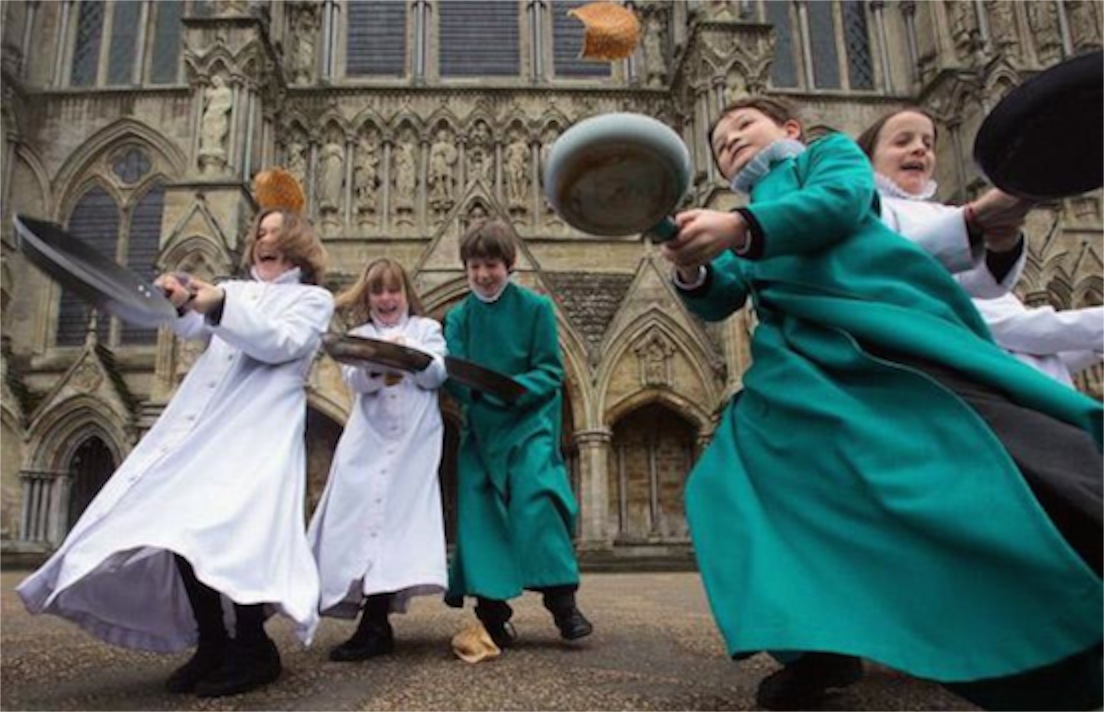
There are holidays that arise from careful planning and there are those that arise almost as a reaction to the plans of officials. Today is one of those reaction holidays. Shrove Tuesday has a lot of different names around the world: Pancake Tuesday, Marti Gras, (which means Fat Tuesday), Fastnacht Day, Sprengidagur (bursting day), Laskiainen and Carnival.
There are a lot of traditions that have grown up with the day that involve eating. Pancakes probably top the list. But pea soup with sweet buns filled with whipped cream are part of the celebration in some traditions. Races, parades, children’s games and even “mob football” games are parts of the tradition in various parts of the world.
The origins of the festival may be a bit obscured by the passage of time, but the traditions of the day area all related to the penance and somber mood of the season of Lent that begins tomorrow with Ash Wednesday. It was common, in former times, for sugar and butter to be seen as luxuries and indulgences that are not appropriate for the season of Lent and a feast to consume these items before the beginning of Lent was a part of the process of getting ready for the season. Traditions and rituals of cleaning homes, and especially kitchen cupboards come from ancient times and precede the formal observances of Lent, but were incorporated into the Christian calendar as the church extended its influence upon popular culture.
The tradition of spring cleaning is formalized in the Orthodox tradition of Clean Monday, also known as Pure Monday or Ash Monday. The idea is that the home is cleaned of all non-fasting foods while the faithful empty their lives of sinful attitudes in preparation for the imposition of ashes.
However it is named and however it is observed, there is something a bit strange about the practice of piling up all of the forbidden foods and some of the forbidden attitudes and behaviors in preparation for a time of self-examination, fasting, and penance. I doubt if church leaders intended for people to prepare for confession by going out and committing behaviors about which to confess.
Still, I admit that I have used the season of Lent as a discipline to change my eating habits. A few days of fasting and a season of paying very careful attention to what foods I eat does help me keep my weight in control. And there is a connection between caring for one’s body and caring for one’s spiritual life, though you certainly can’t take it so far as to measure a person’s spiritual health by their body mass index.
Christians have an aversion to too much show in relationship to the practices of Lent. In Matthew 6:16-18, Jesus says, “And whenever you fast, do not look dismal, like the hypocrites, for they disfigure their faces so as to show others that they are fasting. Truly I tell you, they have received their reward. But when you fast, put oil on your head and wash your face, so that your fasting may be seen not by others but by your Father who is in secret; and your Father who sees in secret will reward you.”
The season of penance should not be about outward appearances and the things that are done to gain the attention of others, but about the inward changes.
We live in a culture that seems to have an aversion to penance. I know of a significant local business where employees are carefully trained never to apologize to the public. The words “I’m sorry,” and “We made a mistake,” are never to be said in conversation with those the business serves. There is a great fear in the administration that such terms might lead to lawsuits. Admission of any wrong is to be avoided at all times, even when a mistake has clearly been made. In place of the apology, those who work with consumers are taught to offer suggestions on what the consumer can do to correct the situation.
It may be good business. But it is a terrible view of human nature. The assumption that every apology would be greeted with revenge is simply wrong. The assertion that one should never say “I’m sorry,” presents a view of the nature of humans and the institutions we form that is, at its core, in accurate. We humans do make mistakes. Our mistakes do have consequences for ourselves and for others. An apology is the first step in setting things right.
Shrove Tuesday isn’t a big day in my calendar. We will have a modest pancake supper at the church tomorrow before our Ash Wednesday service, but the meal is more about gathering together for fellowship than about cleansing the church kitchen. Spring cleaning is a good practice and we’ve been engaged in a little of it in preparation for the visit of our children at the end of the week. But my preparations for Lent are more internal than external.
Lent involves a lot of work for a pastor. We have special services to plan, additional work to do. We usually add studies to the season and Holy Week is an intense time that involves less sleep for church leaders. But it all is part of the rhythm of our seasons and our way of life inside the church. It makes sense to me for us to think over the past year, to note the mistakes we have made and the changes that are needed. Then the hard work of offering those apologies and making those changes needs to be pursued.
Today is a good day to begin. No need to stuff my belly in anticipation of lean days ahead. Instead, I’ll pursue the long process of cleaning out, of sifting and sorting, of letting go of those things that encumber me and hold me back. I’ll examine my past and anticipate my future. The rituals and ceremonies of Ash Wednesday remind me of my own mortality. My time is not unlimited. There is an urgency about getting my affairs in order.
I’m happy to leave the parades and parties to others. There is no escaping our common mortality and our shared need to take stock. We will journey together despite moments of difference.
May your Lenten journey be blessed this year.
Copyright © 2013 by Ted Huffman. I wrote this. If you want to copy it, please ask for permission. There is a contact me button at the bottom of this page. If you want to share my blog a friend, please direct your friend to my web site.
A Pope Resigns

The banner “breaking news” story on the BBC this morning is headlined, “Pope Benedict XVI is to resign.” As I write, there are no details available except that the BBC is reporting that the Vatican has confirmed the news. No reasons for the surprise announcement have been given.
Maybe by the time you are reading this, the news will be out and details will have become clear, but in the wee hours of Mountain Standard Time there doesn’t seem to be much information available. There is nothing about the resignation on the Vatican official English-language site yet. In a note to the times, the Vatican Holy See website is available in Chinese, German, English, Spanish, French, Italian and Portuguese. You can also still read in Latin if you are a stickler for the traditional. It is not a place to go for more information about rumors. If the Pope has made the official announcement, it most certainly would have been delivered in Latin.
There have been a lot of rumors about the resignation of Pope Benedict XVI since he was elevated in 2005. He probably is not the most popular of popes and at the age of 78 was one of the oldest to ascend to the position, though since popes generally serve for life, many have lived to be older than he once ascending to the position. On April Fool’s Day, 2011, an Internet rumor over the resignation initially appeared to be credible.
This time, however, it is not a false rumor. In the time it took me to write the opening paragraphs of this blog, the BBC has posted a link to the live press conference and the news has been confirmed. “Both strength of mind and body are necessary. Strength has deteriorated. I have recognized my incapacity . . .” It appears that ill health is the reason for the resignation. The official date for the resignation will be February 28, 2013. The Vatican has announced that there will be a speedy process to elect a successor and it is anticipated that the Cardinals, who are currently in a meeting at the Vatican will move swiftly to discern who will be the next leader of the Roman Church.
It is a new experience for the church. In modern times, no pope has resigned. The Code of Canon Law makes it possible for a Pope to resign, but it has been at least 600 years since a Pope has resigned. Pope Gregory XII resigned to end the Western Schism, which had reached the point where there were three claimants to the Papal throne. The story is that in 1045 Pope Benedict IX’s resignation was for financial advantage. His successor, Pope Gregory VI was seen as a reformer who ridded the church of the scandals of Benedict IX.
The modern Benedict has presided over a church filled with scandal, though not of his own making. It seems that almost every day brings more detail of sex abuse cases that have spanned decades and that in some cases church officials sought to hide from public knowledge. Cases in Canada, the United States, and Europe have made headlines with victims as young as 3. Church officials have been accused of fraud and misleading victims by deliberately relocating priests accused of abuse instead of removing them from their positions. Certainly the scandal has consumed a significant portion of the Pope’s attention during his papacy.
Before ascending to the Papacy, Benedict XVI was known as Cardinal Joseph Ratzinger and it was said that he advised Pope John Paul II to resign as his health failed. John Paul II was the second-longest serving Pope in history. He was very popular and, if it is true that he was advised to resign, he did not take that advice. He served until his death early in April of 2005.
As a minister of the United Church of Christ serving in South Dakota, I don’t have any direct ties to the Pope. He is unaware of our church and its ministries. But despite centuries of disagreements with the Roman Church, we are all bound in a common faith. Despite our differences, there is more that we share in common than the things that divide us. So I do pay attention to the leadership of the Roman Church. I do take seriously the teachings of our Catholic brothers and sisters, though in their tradition the leadership of women is often not recognized. It is one of the differences that divide us.
I will not be consulted on who should be the next leader of the worlds millions of Roman Catholic Christians. Nor should I be. The process is already in motion. But I will pray that the new leader, when chosen, will be able to act for the future and health of the church. It will be a struggle and a challenge. Institutions do not change quickly and the Roman Church is bound in tradition and weighed down by its institutional structures. The Roman Catholic view is that Jesus Christ handed over leadership of the church to St. Peter who is viewed as the first head of the Roman Church. Each pope since that time has followed in direct succession from St. Peter. The structures that evolved with the centralization of wealth and power and learning seem to outside observers to be very different from the prophetic tradition in which Jesus stood and to the actual teachings of Jesus himself. Still, the church is the result of people of faith trying to live their faith in this world. It is unfair for those of us who belong to different traditions to criticize from the outside.
The truth is that the structures of the church – of any church – are far from perfect. 2 Corinthians 4:7 says, “But we have this treasure in earthen vessels . . .” Our structures are prone to mistakes and failures and scandals. No church leader, no matter how pious and well meaning, is the same as Jesus. In the first letter to the Corinthians, Paul reminds us that “our knowledge is imperfect and our prophecy is imperfect.”
So don’t expect me to predict what is to come for the church. I will wait and watch and pray. One thing about it: the journey is never boring.
Copyright © 2013 by Ted Huffman. I wrote this. If you want to copy it, please ask for permission. There is a contact me button at the bottom of this page. If you want to share my blog a friend, please direct your friend to my web site.
Words
No, I do not invent words. I say that I am a writer. It might be accurate to say that I am an arranger of words. My daily habit of placing 1,000 words in a pattern called an essay or a blog doesn’t even employ a thousand words, really. Instead I use the same words over and over again. Sometimes when I read my blogs, I wish I could break myself of the habit of beginning sentences with the word, “so.” There are a lot of other words that I overuse.
And I am no poet. The precise placement of syllables escapes me. When I try to rhyme I end up with silliness, not rhythm. But there is also a rhythm to prose, though the rhythm of my writing might not be evident. It comes more from the dancing of my fingers on the keyboard than any other source.
My wife and I were married during the summer between our junior and senior years of college. Prior to our marriage, I had typed a few of her papers. After our marriage, we were full-time students for five more years, finishing off our college careers and graduate degrees. Our entire educational careers to that point were supported by a single Olympia portable manual typewriter. When we married, we thought that it would be no problem to share a typewriter. To begin with, I am a bit of a worrier and I am uncomfortable as deadlines loom. As a result, I am most comfortable when I have completed an assignment a few days before the actual deadline. Susan has more ability to work to tight deadlines. She can produce quality work under pressure and has demonstrated that ability over and over again. I don’t know how many times over the years we have mailed in our tax returns on the deadline, prepared by Susan, always meeting the deadline, always accurate. The couple of times that we have been audited, the auditors have commented at the precision and accuracy of her work. Other deadlines have been met, even if she has skirted closer to them than I might have otherwise done.
The other reason that we had no fear of sharing a typewriter is that Susan is an “evening” person and I am a “morning” person. But as things turned out I did my share of typing in the evening and closer to deadlines than I might have otherwise done. Susan has a particular way of typing that is a series of quick letters and then a pause and then more letters. The rhythm of her particular style of typing made it impossible for me to sleep when she was typing. I am not sure if my typing is more rhythmic, but it seems so to me.
Of course, these days, none of this has any particular meaning because the computer keyboard is far too quiet for it to disrupt my sleeping. Susan can type in any manner she wants as late into the evening she wants and it has no effect of my sleep. And these days, we actually have different computers.
Still, I like to think that there is a rhythm to my writing. A thousand words a day. Day after day. I’ve missed only one day in seven years now. Still, quantity is not a good measure of one’s output.
In order for there to be rhythm, there must be silence – some things need to be left unsaid. And in this life, the unsaid is sometimes the more meaningful than that which is spoken. Sometimes the space between the words is more important than the words themselves.
I don’t know what other writers think, but I do, on occasion, wonder what, if anything that I have written will have lasting value. I write primarily for a temporal audience. My blogs are read one day and forgotten another. There are so many words that it would take a monumental effort to go back and read the writings of previous days. I don’t expect that anyone will ever be enticed to do so, though vanity compels me to make them available on my web site. The few things that I have written that have been published in the traditional manner are also of fleeting value. Most of my publications are magazine and journal articles that appear one month and are forgotten the next. I am, after all, a preacher who casts words into the world. As soon as one sermon is ended another is begun. Today I have four services. Each will be unique, with variations in the words chosen adapted to my audience. Three of the services are in health care facilities where the residents are not noted for their capacities at memory, especially short term memory.
Still, it is hard to predict which words will remain. Lincoln said, in his Gettysburg Address, “The world will little note, nor long remember what we say here . . .” He couldn’t have been more wrong. The world did note and has long remembered every word he said. School children have been memorizing his words for generations. Politicians have striven to match his tone and his style, if not his brevity.
I, too, have failed to master Lincoln’s art of using fewer instead of more words. It may be, when all is said and done, after all of the words have been written, that there is more truth in what I have left unsaid than in the words I have written.
Copyright © 2013 by Ted Huffman. I wrote this. If you want to copy it, please ask for permission. There is a contact me button at the bottom of this page. If you want to share my blog a friend, please direct your friend to my web site.
Winter storms
I want to be clear about a couple of things. First of all, there is nothing particularly unusual about this storm. This is the kind of weather one ought to expect in our part of the world at this time of year. Those of us who live in this place need to be prepared for a little snow and wind in the winter. We need the snow. The moisture is essential to the health of the forest and plains. The cooler temperatures assist with limiting the spread of certain insect populations. And if we didn’t get a storm from time to time, we wouldn’t have any stories to tell our grandchildren.
The second thing about which I want to be clear is that the timing isn’t exactly perfect for us. A storm on Sunday reduces attendance at church services. Some people stay in because it might be dangerous for them to travel. Slippery sidewalks can be a definite health hazard for seniors and others who have trouble with mobility and staying home is a reasonable away to avoid unnecessary risk. Others will use the storm as an excuse to sleep in and take a day off from church. I guess that makes sense, too, though less so for me because church isn’t an obligation for me. But my perspective is quite a bit different from that of busy families who are overcommitted and who spend a lot of time running around to a lot of different activities and for whom church is just another activity on a long list of things that they do.

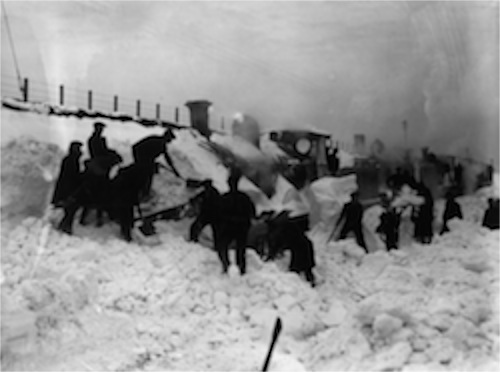
I was living in Chicago in 1975 when the big storm hit South Dakota. Just 7 inches of snow came with that one, but the winds reached 70 mph. The wind chill hovered around 70 below and visibility was less than a quarter of a mile for a whole day. Eight people died. They say it was the worst storm of the 20th century. Rapid City didn’t find that storm anywhere near as devastating as the flood that struck the town in 1972. People generally used good sense and rode out the weather. But the storm never got a name to my knowledge. A big blizzard in 1986 caused a lot of livestock losses, but I don’t think that one got a name either.
Despite its reputation for cold temperatures and its location where the Alberta clippers run into the Colorado lows, North Dakota only suffered one or two blizzards each winter in the years we lived there. The locals always wanted to talk about times when the weather was more severe. No matter how cold it got, someone had a story of a time when it was colder. No matter how nasty the conditions were, someone would be quick to claim that it was “nothing compared to the way it used to be around here.” I only lived in North Dakota for seven winters, so I never gained the status of a “local.” It did get cold there. One Christmas Eve we cancelled our services at our small church because despite having turned up the thermostat and running the electric baseboard heat, we couldn’t get the temperature inside the church above 57 degrees. It was a lot colder outside. We got a mention on one of the late night comedy shows for our record-setting cold.

Church attendance probably will be down for Transfiguration Sunday in Boston, too.
So we won’t be complaining about a little snow. The pantry is full. We’ve made all of our firewood deliveries. The vehicles have full tanks of gas and we have lots of warm clothes. As far as I know, I’ll be at the church early tomorrow and ready for whoever is able to come.
I’m pretty sure our little storm won’t be getting a name.
Copyright © 2013 by Ted Huffman. I wrote this. If you want to copy it, please ask for permission. There is a contact me button at the bottom of this page. If you want to share my blog a friend, please direct your friend to my web site.
Year of the Snake

I don’t bother to follow the horoscope printed in the newspaper. From time to time I run into someone who makes reference to it, usually in terms of the predictions made for their own lives and sometimes that person will have read the predictions for my sign of the zodiac. I sometimes have to stop to think about my sign. A discussion of the zodiac didn’t figure into my meeting or dating my wife. Without an exploration of such things, we have ended up being very compatible. We’ll celebrate 40 years of marriage in June.
What is mildly interesting about the Zodiac, in my opinion is the unique blend of science and superstition inherent in astrology. Astrology is really a blending of a number of belief systems. On the surface there is quite a bit of logic behind astrology. The movement of the stars and planets in relationship to each other demonstrates that different parts of the universe have relationships – the positions of the sun, moon and planets are explainable in terms of their size, mass, and basic principles of physics. It makes sense that what happens here on this planet is affected by the movement of other parts of the universe. A basic example is the ebb and flow of the tides. The gravitational pull of the moon affects the flow of water around our planet. The lives of humans are affected by the tides. Mariners pay attention to the tides and use them to their advantage when planning trips. Fishermen know that the rising and falling of tides has an effect on where they will find fish in the ocean.
For most of history Astrology was considered to be an academic discipline and was connected with other studies. It was only the rise of Newtonian physics towards the end of the 17th century that began to question the scientific principles behind astrology. These days, astrology is viewed as a pseudoscience by academicians and its basic principles have largely been disproven by other scientific theories and testing.
The real mistake in logic came from the attempt to predict the future. We are relatively accurate in observing the present and the near past, but human logic has never produced an accurate system of prediction of future events. Biology and physics contain enough variables to make prediction a highly speculative art.
Still, there are a lot of people in the world who put a lot of stock in astrology. The frenzy surrounding the Mayan calendar was, in part fueled by a form of astrology.
Different parts of the world have different systems of attaching certain planets and constellations to different dates. Since Sunday is New Year’s Day in the Chinese lunar calendar system, a lot of the world’s citizens will pay a bit of attention to the beginning of the year of the snake. The Chinese zodiac features a dozen animals, each taking turn in the cycle. I don’t pay any more attention to the Chinese zodiac than I do to the western zodiac, but I at least know that I was born in the year of the snake and that this is the fifth time that cycle has brought us back to the year of the snake since my birth year. I don’t think the year of the snake is a particularly good year for business or politics in the Chinese system, but I did once read that the pairing of the snake and the rabbit is a fortunate match and since my wife was born in the year of the rabbit, that much seems to be working out for us.
Astrology and philosophy form a complex relationship in Chinese and eastern Asian thinking. The theory of the three harmonies (heaven, earth, and humans) led to a very complex system of timekeeping for religious purposes. This gave rise to the use of astrology for the purposes of making political predictions. There were, in the past, astrologers who were very powerful advisors to political and governmental leaders, claiming to have the ability to discern the best dates for political announcements, the waging of war, making appointments and other decisions of political leaders. I’m not a student of Chinese astrology and do not fully understand the philosophy or the system, but it does appear that astrology has fallen out of favor among Chinese scientists in a manner that is similar to what has happened with western astrological systems. It seems that political operators are able to use pseudoscience to gain influence in every generation. Even though universities have tended to move away from astrology as an academic pursuit, governmental decisions are still influenced by those who use science in questionable ways.
So I’m not putting much stock in the coming of the year of the snake. It may have a mild entertainment value. I do read the fortunes in fortune cookies. Although I know that such cookies are not an ancient tradition in the orient, they have become associated with Chinese restaurants in the United States. Once, after having delivered a trial sermon, I went out to dinner at a Chinese restaurant with members of the search committee to finalize the terms of call to a new congregation. The fortune in the cookie served to me said, “The time is right for a change of career.” I thought that the chair of the committee might have arranged for a particular fortune to be in my cookie, but it seems it arrived on my plate by random luck. I took the job and for ten years had a good relationship with that congregation. Our children often think of that city as their hometown.
In a manner similar to reading fortunes for entertainment value, I at least have noticed that Sunday is the Chinese New Year and that we end the year of the dragon and begin the year of the snake. I have a memory of having read that people born in the year of the dragon aren’t among the best at business and that would be accurate in my case. But those born in the year of the snake generally have good fortune in relationships. It seems safe to predict that the coming year will be better for love than for business.
But again, I don’t pay much attention to the zodiac and it is unlikely that I will remember my predictions by the end of the year.
Copyright © 2013 by Ted Huffman. I wrote this. If you want to copy it, please ask for permission. There is a contact me button at the bottom of this page. If you want to share my blog a friend, please direct your friend to my web site.
Grief's journey
Each grief came with its own set of warnings and burden of care of the dying. Her father fell victim to Asbestosis, the result of a unique combination of ignorance and corporate greed that painted its picture of death on a small Montana town that was so striking that it has been the frequent subject of national news stories. One of those deaths was a man who earned his living as an electrician at the paper mill, who lived for the weekends at the lake and loved his family. He was my uncle, but he did not die before the typical struggle to breath as lung capacity diminished and slowly forced inactivity to populate more and more until just gasping for air became the only thing that was left. And then it, too, was gone.
But she had lived her adult life away from that town, as a young married woman she moved to the city with her husband whose brilliant mind was a problem-solving boon to the automobile industry in the first wave of environmental consciousness. He could tell you more about catalytic converters in five minutes than you ever thought you’d need to know in a lifetime. They worked hard and seemed to have their lives together for a retirement of traveling in their new and comfortable camper. When you’ve just established a retirement home in Montana, Florida isn’t the most convenient location for a disabling stroke. Survivor that her husband was, he hung on for enough recovery to make it to the nursing home in Montana before the clouds darkened and the brilliant mind succumbed to the effects of cardiovascular disease.
She survived a bout with cancer and adding the title “survivor” to her name fit well with the losses she had known. But no mother wishes to survive cancer to watch her son die from a disease bearing the same name. He too experienced successful treatment, but when the cancer came back it was too extensive and to spread out to respond to anything more than palliative care. He was allowed to go home, with hospice, for his final days.
And now there is one son, three brothers, two grandsons and a granddaughter left. And my cousin is the primary support for the granddaughter who lives with her as she walks through the valley of the grief of her father’s death, a journey that is far less familiar to the granddaughter than the grandmother. It is almost too much.
But only almost.
Despite what you might think, we humans are rather well adapted for grief. Our faith does not hide the reality of our mortality from us. Our traditions give us opportunities to practice our grief through an annual journey along the road of Lent and Holy Week. Knowing this, having practiced our faith, however, does not make the journey any easier. The road is no less rocky when it is familiar. Traveling the road is exhausting. And too many trips in too short of a time can leave one feeling battered and weary and covered in road dust. Memories, normally great companions and allies in the journey of grief, can become overwhelming. And the fear of pain is more debilitating than the pain itself. Knowing what is coming is not always a blessing.
We may have been designed for grief. But we were not designed to grieve alone.
It is in the actions of a loving and caring community that I see the first signs of the power of resurrection. Living a long ways from my cousin, the things I noticed early on were the gentle and kind responses of others who not only sent their greetings, but hit the “reply all” button so that we might form community in support of our loved one. I know small town Montana well enough to also know that I can count on the casseroles and cakes and visits from friends who don’t know what to say but who never would let not knowing what to say keep them from paying a visit. I know my cousin can count on the living presence of the body of Christ in that small Methodist church.
Death is a reality. It is not the victor.
Grief is an inevitable journey. It is not the definition of the meaning of our lives.
For my cousin, grief is a season, not the story of her life.
As I go through my days nearly a thousand miles away, with all of the meetings and interviews and services, and letters and chores and planning and other things that clutter a normal life, my thoughts travel to be with my cousin in this season of grief. I can only imagine the pain of the death of a child. I can only barely picture how each word you say to your grandchild must be carefully chosen as you forge a new relationship and a new way of looking at the world. I cannot know what it feels like to be her. I only know that when you have no more words for your prayers, it is important to remember that you aren’t the only one praying.
We journey on. But some days the steps are heavy and slow. Thanks be to God that we do not walk alone. When we open our eyes and senses, we can see the signs of the faithful cloud of witnesses who have gone before. When we pause for a rest, we sometimes can glimpse the reality that ours is not the last generation to travel this journey.
Copyright © 2013 by Ted Huffman. I wrote this. If you want to copy it, please ask for permission. There is a contact me button at the bottom of this page. If you want to share my blog a friend, please direct your friend to my web site.
Skeptics and studies
“This concerns me,” Poundstone said.
“This was an actual, legitimate medical study,” Sagal assured her.
“Who says?” she demanded.
“The science people!” another panelist, Faith Salie, chimed in.
“they studied thousands of people who have been eating a certain amount of eggs,” Sagal explained, “and they discovered that the plaque in their arteries was two-thirds as bad as people who had been smoking.”
Poundstone suggested they might re-name the show: “Wait, wait . . . don’t tell me what’s bad for me now.”
The show has featured Poundstone ranting about a British study on the best way for a man to attract a woman at a nightclub: “You know, I’ve really been suspect of some of the studies that you guys mention.”
Again, when Sagal mentioned that Japanese scientists found that watching kittens and other cute baby animals on the internet made workers more focused and productive the rest of the day, Poundstone asked, “Why would anybody even do such a study?”
Sagal said, “Well, I imagine they might start with the premise that a lot of people are watching cat videos at work. We might as well find out what effect it is having on them.”
Poundstone replied, “I see what you’re saying. So their boss came in while they were watching cat videos and said, ‘what the h . . . are you doing? Your not doing anything.’ And they said, ‘oh, but we are doing a study.’”
I’m with Paula Poundstone. I read a few news articles and look up a few studies in medical journals and other scientific papers, and I am amazed that scientists, especially social scientists, can find funding for their research. How do they come up with the ideas for their studies and who actually pays for such silly research?
There has been a study on the relationship between eating organic food and immoral behavior.
Scientists spent $3 million putting shrimp on a treadmill to study the effects of bacteria on mobility.
They’ve studied the effects of playing FarmVille on Facebook on making and keeping actual friends.
Scientists have studied whether or not Twitter can predict the stock market.
I understand the dynamics of needing a research project to power a graduate school thesis and finding a new topic that hasn’t already been researched beyond comprehension can be difficult. I also know that some of the studies that may look silly or useless on the surface can lead to increases in our understanding of important human dynamics. With such a fast-paced and ever-changing world where social, physical and technological factors are constantly changing, sometimes the silly studies produce the greatest breakthroughs in understanding.
I remain with the skeptics, however. Skepticism is a healthy attitude when it comes to scientific studies of any type. The skeptics often spot the flaws in the assumptions or the missed variables that lead to inaccurate conclusions.
But there was a study recently that did catch my attention.
For five years, now, researchers at New York’s University at Buffalo, Stony Brook University and Grand Valley State University have followed 846 individuals who have faced stressful situations in their lives. Stressful experiences included such things as serious illness, burglary, job loss, financial difficulties or the death of a family member. Respondents were asked to report the amount of time in the past 12 months they had spent helping friends, neighbors or relatives not living with them by providing transportation, running errands, doing shopping, performing housework, looking after children and other tasks.
The results, to be published in the American Journal of Public Health, demonstrate that providing tangible help to others protects health and adds to longevity. People who help others live longer than those who do not. Helping others adds to the capacity to endure stressful events.
Of course, I am inclined to believe the study because it reports a truth that I had learned from another source: “In everything I did, I showed you that by this kind of hard work we must help the weak, remembering the words the Lord Jesus himself said: ‘It is more blessed to give than to receive.’” (Acts 20:35)
The proverb that the Bible attributes to Jesus has been attributed to other sources and is found in most world religions. Those of us who have experienced a few Christmases know intuitively that finding just the right gift for another can render much more pleasure than receiving a gift. The feeling of anticipation as you wait for another’s surprise is as gratifying, if not more so than the anticipation of receiving a surprise.
Now scientists have found solid evidence to back up the truth we have long known. Giving to or helping others helps to relieve stress in the body and is beneficial to overall health and longevity.
It feels good to do a good deed for someone. And that good feeling isn’t just a momentary experience, but rather a genuine reduction in stress. Putting others first not only feels good. It is good. Volunteering services for a worthy cause contributes to a more healthy life. Serving others and putting their needs and concerns ahead of your own, decreases your needs and concerns.
I remain a skeptic about many scientific studies. And I think that there are plenty of things labeled research that draw less-than-accurate conclusions. But I’m pretty sure that the studies of the effects of helping others on overall stress are accurate.
It still doesn’t explain why it takes a study to conclude the obvious, but such a study is probably more valuable that putting shrimp on a treadmill.
Copyright © 2013 by Ted Huffman. I wrote this. If you want to copy it, please ask for permission. There is a contact me button at the bottom of this page. If you want to share my blog a friend, please direct your friend to my web site.
Slogans




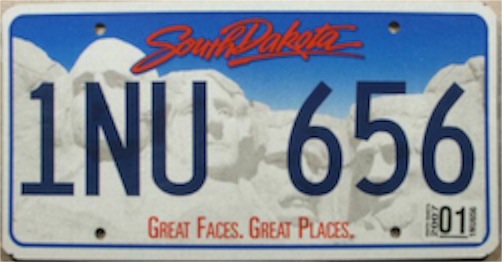
As much as I complain about the slogans of the places I have lived, I have to admit that the proposal for a new slogan for Kentucky makes me glad that I do not live there. There are folks there who want to rebrand their state in a striking fashion. I would submit that their proposal is for mature audiences only and then only for audiences that can take a bit of vulgar language. I guess that I can use the phrase, as it does appear in the Oxford English Dictionary and I have frequently touted the OED as the gold standard when it comes to giving definitions to the words of our language. The OED gives this definition: “to act roughly or aggressively; to be powerful or assertive.”

I can imagine that the makers of bumper stickers and t-shirts are pleased with the slogan. After all it is acceptable enough in society to be used by the President. Asked by an interviewer during the Gulf oil spill whether it was time to “kick some butt” in order to solve the crisis, President Barack Obama ratcheted up the metaphor by replying that he would find out “whose ass to kick.” He wasn’t the first President to use the phrase. His predecessor, George W. Bush, recalled in his memoirs how he resolved to find the perpetrators of the 9-11 attacks and “kick their ass.”
I don’t see the attraction of living in or even visiting a state that treats people the way a president intends to treat those who attacked the United States on its own soil.
Of course the proponents of the slogan don’t mean that at all. The phrase has so many different meanings in our society that we don’t know whether it refers to a movie title or motivating a horse to move out of the barn.

For now, I’m content to live next to one of those famous places with four famous faces and let the people of Kentucky come up with whatever slogan they choose.
Copyright © 2013 by Ted Huffman. I wrote this. If you want to copy it, please ask for permission. There is a contact me button at the bottom of this page. If you want to share my blog a friend, please direct your friend to my web site.
An illusion of objectivity

Regular readers of this blog will know that I love dictionaries. We keep an unabridged dictionary handy at the dinner table to look up and understand words that come up in the course of our regular conversations. I have written about the Oxford English Dictionary at least twice in my blogs. I have nothing against dictionaries. They have great value in the advancement of human knowledge.
But seriously – “transportation” and “add!” Do the justices somehow think that we believe they were puzzled over the meaning of these words? These are brilliant and highly educated people. They have vocabularies that would put to shame the understandings of many other people. They are not using dictionaries to find our the meaning of words. In my not so humble opinion, the justices are using the dictionary to make their very subjective decisions appear more objective – as if the reason they came to their conclusions was that they are driven by pure logic only, when in reality they doing what I believe the constitution calls upon them to do – offer their opinions.
There is genuine genius in the rules that allow generous judicial discretion to the justices. Often an argument over the meaning of the law can come down to the interpretation of the meaning of a single word. But if the justices want me to believe that they somehow are suppressing their own sense of values and meaning and deferring to an objective and outside source such as a dictionary, I just don’t buy it. And, frankly, I don’t want them to operate in such a manner. A computer can be programmed to analyze language and make decisions about inappropriate uses of it. Microsoft Word has a grammar checker built into the home version of the program. When it comes to interpreting the actions of Congress, however, I believe that we need the combined wisdom, experience, and, yes, opinions, of real living human beings. It is completely appropriate for some decisions to have a subjective element.
What is not appropriate is for the justices to pretend that they are somehow being objective and that their opinions are not as important as their research.

The increasing specialization of education has resulted in more and more people who are educated, but who have spent virtually no time in the study of philosophy. The PhD degree can be earned in many fields without ever engaging in a discussion of the history of philosophy. A Juris Doctor degree is commonly awarded in our country without the requirement of a basic understanding of philosophy.
The result is a huge number of highly educated persons occupying positions of power and influence who have never seriously engaged in a discussion of the nature of Truth. Too often educated people act as if they do not recognize the distinction between the truths we can grasp and the ultimate Truth that is always beyond human comprehension. Too often highly educated persons pretend that they are objective purveyors of Truth instead of humans whose grasp on truth is always subjective.
We’ve observed it in science for some time. Mathematicians and physicists are often convinced that their studies are objective – based on the actual operations of the universe and not influenced by subjective decisions made by individuals. They fail to see their own biases because they believe that no bias is possible.
A brief study of the history and philosophy of science demonstrates otherwise. Try doing math without the concept of zero. Humans did for generations. Zero is not some absolute truth that somehow perfectly exists in the universe and is calmly observed. Zero is a human idea – a construct of human minds created in order to make the human rules applied to mathematics work in a consistent fashion. There is no objective reality between +1 and -1, but the operation of all sorts of mathematical principles will not work without the assumption of zero.

Frankly, I am delighted with the human element in our deliberations. I am fascinated by the quirks of our interpretations. I am energized by conversations that stretch my understanding. That is why, when I suspect that there is more to the story than the dictionary tells, I go for another dictionary. That is why I like the Oxford English Dictionary which turns to literature and common usage for explanations of the way we use words rather than claiming to be the ultimate authority on some sort of objective meaning.
I’m delighted that the justices of the Supreme Court refer to dictionaries. I hope they keep doing so. But I am a bit offended that they think we might somehow believe that they are being objective when they do so. They are capable of defining a few narrow truths for our generation. The search for ultimate Truth continues. I suspect that future generations will find the justices’ opinions of themselves – and their use of dictionaries – to be as silly as other subjective opinions that we humans offer.
Perhaps the increasing use of imaginary numbers in advanced calculus will lead a mathematician to the conclusion that philosophers have held for generations: all numbers are imaginary.
Whether or not the justices can admit it, all opinions are subjective.
Copyright © 2013 by Ted Huffman. I wrote this. If you want to copy it, please ask for permission. There is a contact me button at the bottom of this page. If you want to share my blog a friend, please direct your friend to my web site.
Super Bowl XLVII

For more than a decade we have observed a sort of super bowl tradition at our church. One of our members would sign up to be the liturgist on the day of the big game and I would write a tongue-in-cheek commentary on the match-up using a few Biblical references. The big game today offers a lopsided match up when it comes to Biblical terms. The 49ers are favored by many to win the game, but where would one find a reference to a 49er in the Bible? Ravens, on the other hand, make several appearances in the Bible. Among the minor references to ravens, mention is made of their color and their habits. Probably the most famous reference to ravens in the Bible is Luke 12:24: “Consider the ravens: they neither sow nor reap, they have neither storehouse nor barn, and yet God feeds them. Of how much more value are you than the birds!” It isn’t really a very flattering reference, really.
I suppose that were I to be writing such a commentary for this year’s Super Bowl, I would probably end up with the simple thing to do when a number is involved. Since contemporary Bibles are divided into numbered chapters with numbered verses, there are lots of 49’s in the Bible. Jacob blesses his sons in Genesis 49. Psalm 49 warns of people who have wealth but lack understanding. Isaiah 49 addresses the call of the prophet and the purpose of his message.
The number 49, however, has an even more prominent role in Old Testament Theology. It is the year of the Jubilee or, in certain interpretations, the year preceding the jubilee. 49 is 7 times 7 and whenever 7 times 7 years rolls around, there is to be a year when cropland is left fallow to restore itself, persons who are enslaved for unpaid debts are freed and there is a general amnesty in a wide variety of agricultural and business activities. The basic concept is that perpetual slavery and debts without end weigh down a society.
The name of the San Francisco 49ers comes from the fortune seekers who rushed to the California gold fields in 1849. The connection with the name and football makes sense only if you consider that the team has been based in San Francisco for all of its existence. Unlike other teams that have changed cities, the 49ers have always been based in San Francisco and thus have kept the association between their name and the state of California and, in some sense, the folks who settled there after the 1849 gold rush.
The Ravens, on the other hand got both a new name and a new city in 1996 when Art Modell, owner of the Cleveland Browns announced his intention to relocate the team from Cleveland to Baltimore. Commissioner Paul Tagliabue promised the city of Cleveland that the Browns’ name, colors, uniform design and franchise records would never leave the city. Modell persisted, the team left the town and thus got a new name and new colors when they got to Baltimore. There aren’t any fans of the Ravens in Cleveland and Cleveland is the home to the United Church of Christ’s national offices. Church House, our national home, is connected to the Radisson Gateway Hotel, which is across the street from the stadium where the Browns play. For three years, from 1996 to 1999, there were no Cleveland Browns. Cleveland returned to the NFL in 1999 with high hopes and expectations and a very wealthy owner. The first few seasons, however, featured a pretty awful team.
So there are no fans of the Baltimore Ravens in Cleveland and Cleveland is home to the United Church of Christ’s national offices. So you might expect members of the United Church of Christ to naturally tend to cheer for the 49ers. Which would be the case except that we are the United Church of Christ. Our members and congregations are fiercely independent. We don’t take kindly to instructions coming down from our national offices. In fact, our denomination has been described as an inverted pyramid, with the local congregations at the top and the employees in the church’s national setting taking orders from everyone else in the church. That may be a bit of an exaggeration, but don’t expect agreement in the United Church of Christ about which football team deserves to win the Lombardy Trophy.
Like many in our church, I have no particular loyalty to either team. I’ll probably watch the game, or at least part of it simply because it has become such a national icon. Too many conversations center on the game in the next week for me to ignore it. Part of being a pastor is sharing the lives of the people I am called to serve and a lot of those people will be watching the Super Bowl today.
I enjoy the notion of New Orleans playing host to a national event and would much prefer watching a football game in the Superdome than the frantic an all-together inadequate attempts to provide shelter to the victims of Hurricane Katrina. It is good to see the city coming back from the devastating storm and able to be the focus of celebration and leisure once again. That doesn’t mean that there isn’t still a lot of work to be done. Indeed there is. But for today the attention will be focused on sports instead of rebuilding. Every city deserves a day off from the hard work of making repairs and preparations for the next storm. Hurricane season has passed, the levies are holding and it should be a good day in New Orleans. In addition to hosting the national party, the city should make a few dollars from all of the fans streaming to the city. A little economic boost won’t hurt the city in the least.
So enjoy the game. Watch the ads. Have a party and eat some fun food. But don’t over do it. When all is said and done it’s only a game. And when the game is over there’s still plenty of work to be done.
Copyright © 2013 by Ted Huffman. I wrote this. If you want to copy it, please ask for permission. There is a contact me button at the bottom of this page. If you want to share my blog a friend, please direct your friend to my web site.
On Eagles Wings

I’ve been seeing a lot of eagles lately. On Monday, as we drove west on Highway 44 an eagle swooped low over the highway just as we were nearing big bend. Yesterday we hauled a load of wood up to our partners on the western end of the Cheyenne River Reservation and were treated to views of lots of deer, antelope, eagles, and hawks. I don’t remember the names of all the hawks, and I know that some of our hawks don’t spend the winter around here, but I think that what we saw were Goshawks. Then again, I’m not much of a birder and shouldn’t be turned to as an authority. I do, however, know bald eagle and golden eagle.
The eagle has a special place in the stories of many people. According the lore of our Lakota neighbors, the eagle is the highest flyer of the birds and therefore has a different perspective on the earth. Some indigenous people say that the eagle sees the world from the same perspective as the Creator, who watches over the earth from above. Eagles have been uses as symbols of power, truth and freedom. The spread of the wings demonstrate balance.
For many plains tribes, the eagle is seen as an intermediary between humans and the Great Spirit. The eagle is given the job of carrying prayers between the physical world and the spiritual world. As such they bear not only the prayers of living humans, but also the truth of the Creator. An eagle feather, therefore, is a symbol of great value – the gift of an eagle feather is the highest honor that can be bestowed. The feather carries great responsibility. Holding a feather requires the one holding it to speak the truth. An eagle feather must not be placed in a drawer or cupboard, but always held up in honor.
The observance of eagles as sacred birds is not limited to American Indian culture, however. It is deeply ingrained in the history, traditions and faith of many other people.
The prophet Isaiah spoke of the eagle as the protector of the people, the source of strength, and an agent of God.
Have you not known? Have you not heard? The Lord is the everlasting God, the Creator of the ends of the earth. He does not faint or grow weary; his understanding is unsearchable. He gives power to the faint, and strengthens the powerless. Even youths will faint and be weary, and the young will fall exhausted; but those who wait for the Lord shall renew their strength, they shall mount up with wings like eagles, they shall run and not be weary, they shall walk and not faint.
Isaiah 40:28-31
The places where we see eagles are places of special significance. The hills and plains of western South Dakota are places of restoration for me. When I am weary, or grieving, or feeling low, spending time outdoors in the open space seems to revive me, remind me that I am not alone, and restore my connections with God. In another tradition, Celtic Spirituality, the people talk about “Thin Places” or “Thin Spaces.” They are the places where the distance between heaven and earth collapses and we are able to catch glimpses of the divine. Thin spaces can be the product of human engineering, such as the sanctuary of our church. But for me, they are most often outdoor places where I can see plenty of sky and where the closest neighbors are the deer and eagles.
I have come to appreciate that there are also “thin times.” It is not just a function of being in a holy place. There are moments in our lives when we are more open to the presence of the holy and more aware of the transcendent. Baptism is a “thin time.” When parents hand me their most precious little one and I hold that child at the font in the midst of the people, I never fail to feel as if I have been handed an angel. Even when the child is fussy and the behavior not quite angelic, the power of God in the presence of that human person is so evident that I am overcome by the moment. I revert to words I have inherited from our traditions in part because I have no words to describe that experience.
Grief is another “thin time.” When we walk through the sometimes painfully slow process of healing from loss, we come to understand that we never walk alone. Encountering the mortality of another is a reminder of our own mortality. All that we have and all that we are is “ours” for a little time only. We belong to God’s magnificent creation in ways that we can only partially understand. The experience of grief is a reminder of the shortness of our time and of our connections with that which is beyond.
Michael Joncas wrote a hymn based on Isaiah 40. Trent Eddy sang two verses of that hymn last week at the funeral of a friend:
You who dwell in the shelter of the Lord,
Who abide in His shadow for life,
Say to the Lord, “My Refuge,
My Rock in Whom I trust,”
And He will raise you up on eagle’s wings,
Bear you on the breath of dawn,
Make you to shine like the sun,
And hold you in the palm of His Hand.
For to you His angels He’s given a command
To guard you in all of your ways,
Upon their hands they will bear you up,
Lest you dash your foot against a stone.
And He will raise you up on eagle’s wings,
Bear you on the breath of dawn,
Make you to shine like the sun,
And hold you in the palm of His Hand.
Different people use different images when they think of their connections with that which is beyond the current experience. Sometimes I feel the presence of the “great cloud of witnesses” (Hebrews 12:1). Sometimes I feel the strength of the eagles. Sometimes I simply walk through the land aware that mine are not the first footsteps and neither are they the last.
How fortunate I am to be given the moments of thin spaces and thin times. How fortunate to still be able to have my breath taken away by the sudden appearance of an eagle in the Dakota sky.
Copyright © 2013 by Ted Huffman. I wrote this. If you want to copy it, please ask for permission. There is a contact me button at the bottom of this page. If you want to share my blog a friend, please direct your friend to my web site.
A Real Dictionary

I started my day with a tiny computer glitch that struck me as delightful. The History Channel has a web site that shows a brief video and provides a bit of text called “This Day in History.” It usually highlights a few things that happened on the particular day and chooses one story for just a little bit more detail. Since I have been watching for several years, now and since the cays repeat every year, I do know that sometimes they choose a different story from the previous year, sometimes they repeat that story.
At any rate, today I went to the site and the video is not playing. Instead of the usual video, there is just a black screen with an ad on the left. I refreshed the screen. I reloaded my browser – always the same effect. I concluded that the problem must be with the site. Someone made a mistake on the upload. They will discover the problem and the video will be running soon enough. I read the text portion of the site and went on with my day.
Then I got to thinking what fun it was to have the video not working. The topic today is perfect for a video that can’t tell the story. On February 1, 1884, the first portion of the Oxford English Dictionary (OED) was published. I am a huge fan of the OED, though I never have owned a copy. No worries, technology now makes the OED accessible to me without a trip to the library because its online resources are fantastic. The OED is considered by many to be the most comprehensive and accurate dictionary of the English language. There are some who believe that all dictionaries are the same. They probably also don’t know that dictionaries contain errors and that you can get incorrect information from dictionaries. They may also be unaware of the rapid pace at which our language evolves and how rapidly meanings change.
That rapid pace of change proved to be a huge challenge for the original writers and editors of the OED. Members of the London Philological Society were frustrated with how rapidly dictionaries became out-of-date. They were also frustrated with errors contained in the available dictionaries. They decided to produce one that would cover all vocabulary from the Anglo-Saxon period (about 1150 AD) to the present. Mind you this was in 1857, when the English Language had a vastly smaller vocabulary than is the case today. Still the task was daunting – and much bigger than the originators imagined.
They believed that a 4-volume, 6,400 page work would cover the language and that it could be completed in 10 years. The estimate was significantly shy of the reality. It took over 40 years until the final fascicle (portion) of the dictionary was completed in April of 1928. The work came in at over 400,000 words and phrases in 10 volumes.
What makes the OED so much fun for those of us who love language is that the OED gives a chronological history of the use of each word and phrase, citing quotations from famous sources. The quotations line up as a sort of history of literature. I have ended up reading books that I might not have otherwise read because of the quotes I discovered in the OED.
Here is a fantasy that only a bibliophile could have: wouldn’t it be a hoot to write something that got quoted in the OED? Instead of just scrambling and jumbling word order, which is the kind of writing I do, some people actually contribute to the shaping of the language and the understanding of its meaning. Don’t look for a quote from me in the OED anytime soon.
But then that last bit of advice is not good advice. If you want to look at the OED, the time to start is as soon as possible. I read a lot. I’m guessing that at my current rate of reading it would take more than 150 years for me to read the OED if I made it the only thing that I read. There is more than a lifetime in that set of books.
In the mid-1980’s the OED came out with a 4-volume supplement with words, phrases and meanings from North America, Australia, the Caribbean, New Zealand, South Africa and South Asia. After all there are more people who speak English in India than in the United States. The same is true of China.
The second edition of the OED is available online. It now has topped 20 volumes. The print version weighs 137 pounds and contains 59 million words. At 215 British Pounds (about $340 at the current conversion rate) the price of a one-year subscription to the OED is beyond my comfort level, so I won’t be subscribing. Institutions can get a free 30-day trial, and I have been tempted to register the church library for the free 30 days, but in the end I think that is not really fair because I know we have no intention of subscribing. The University of Wyoming has a subscription and I’ve browsed through the OED online.
It is possible to purchase the actual books. The hardcover edition comes in at 20 volumes, 22,000 pages and costs $995.00. On the other hand, it is likely I’ll spend more than $995 over the course of my lifetime on other books. I might tire of only reading the dictionary, even with the substantive and pithy quotes. Also one wouldn’t quite know where to begin. If you start at the beginning, you become expert in only the start of the alphabet because life is too short to read the entire thing. Perhaps you switch volumes every month to get a more broad based approach.
Since the OED is now updated quarterly with more than 1,000 new and revised entries each quarter, it is likely that just keeping up with the changes is to large of a task for an individual.
So if you have a sense of humor like mine, you might find it amusing that even the History Channel couldn’t capture the OED with a video clip. There is just too much there to put into a video. Besides, if you want to know the OED, the way to do so is by reading and not watching video. In the flow of life, I find reading to be more satisfying than video anyway.